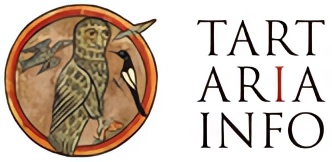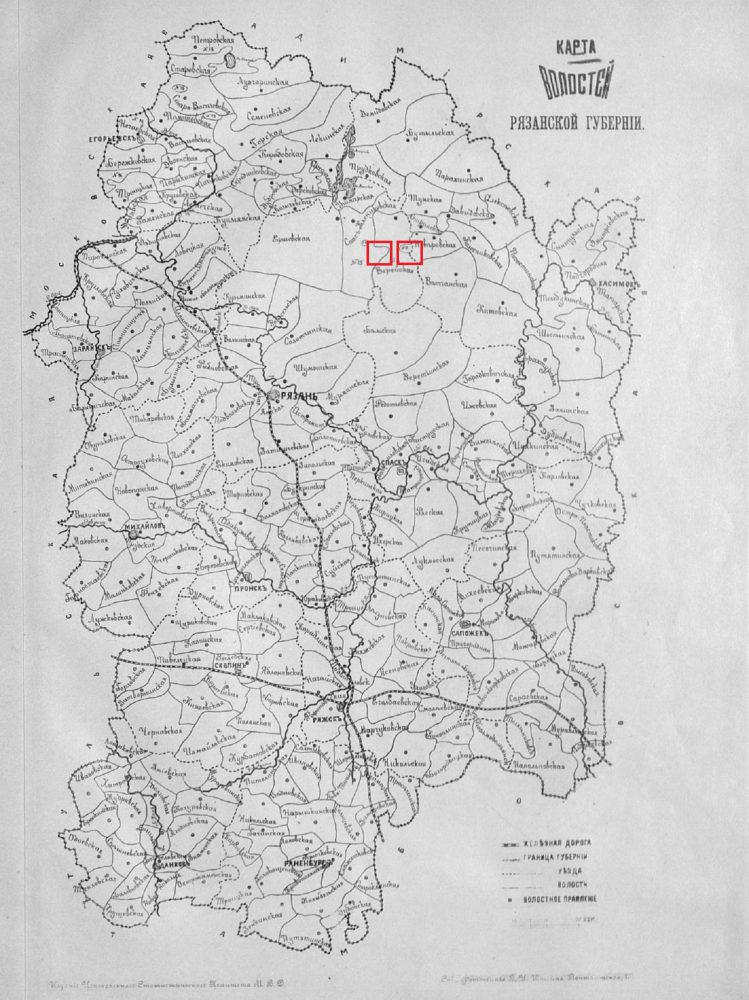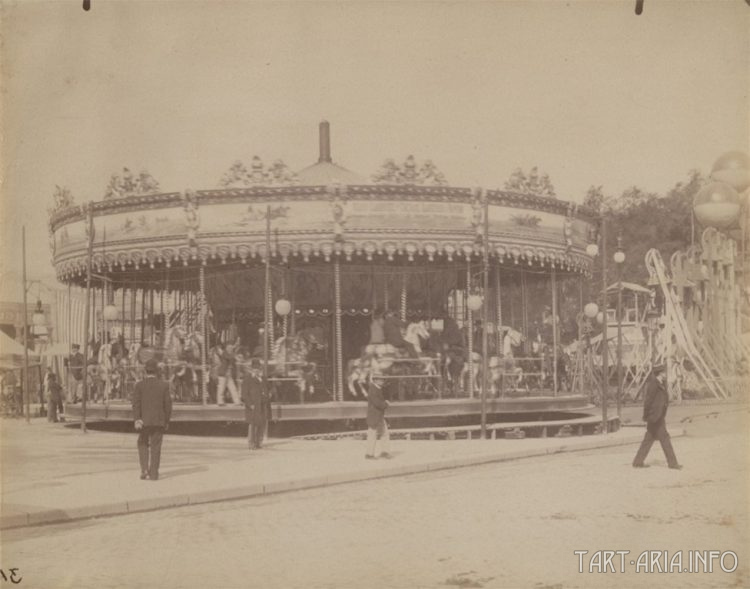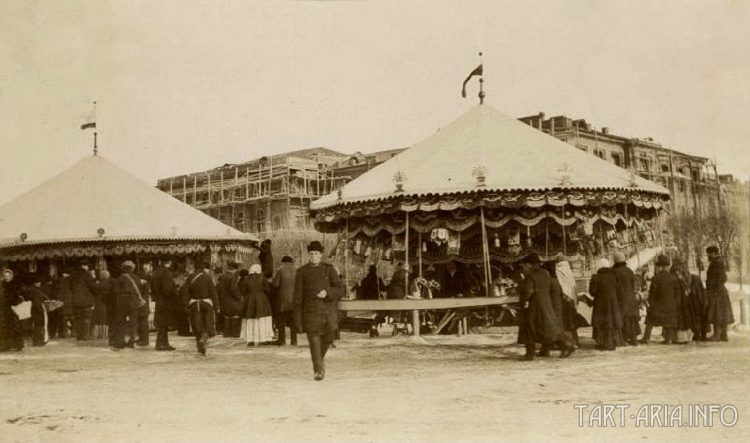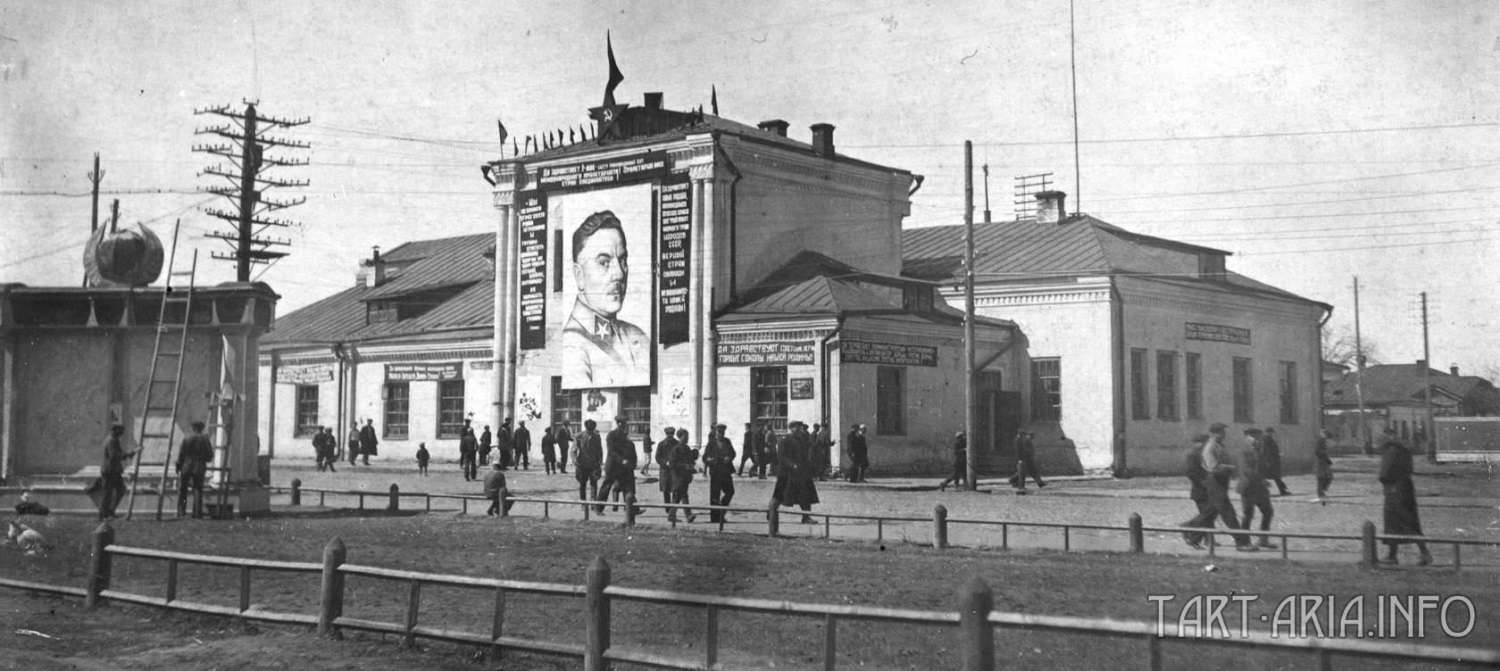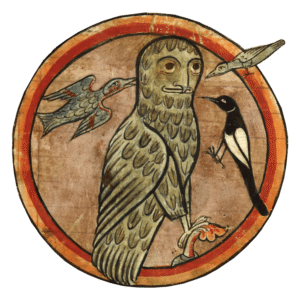Author’s notes
The year was 2011. I was having a business trip to Caucasus when I decided to make a stop in a town called Verhnaya Balkaria. It turned out that I had a spare time from work, so I used the opportunity to experience the well-known caucasian hospitality. During a feast, I had a long conversation with a local guy, who invited us to his place. One of the topics that we touched upon during our talk was a history of the local geographical place. Surprisingly enough, my companion right away told me exact names of all his ancestors in the male line from modern days back to the times of Timur’s (Tamerlane’s) campaign, which partially took place in these lands.
This question bothered me for many years, emerging probably during school years, in the 80s. My former literature teacher asked me during one lesson to give a brief description of a character (an old woman named Hlyostova) from a famous Russian comedy-novel «Woe from Wit» (by Alexander Griboyedov). I couldn’t remember anything about the character, so I said some nonsense, and was immediately corrected by the teacher. She then gave us a dull lecture about our great government which did everything it could to educate soviet children (who, according to her, were just lazy griefers) and finally told the right answer to her question, but obviously, in accordance with the party line.
«- Do you even try to learn history? During the time of Catherine the Great the noble class was given full permission to control and exploit peasants, both in ordinary life and during military campaigns (while the nobility had an official right to buy off military service). All spheres of life of that time could be characterized by inequality, corruption and human exploitation. Even though contemporaries of the empress called that time a «Golden age», it was in fact an age of decay for the Russian government of that time, which eventually led to epidemics, wars and further decay of the government, which was in its turn an important prerequisite for the Russian revolution in 1917.
A Griboyedov’s character – old Hlyostova was knowingly created to show a person whose youth passed exactly during that «Golden age». He wanted to show that people of that time were uneducated, uncultured, cruel and whatever bad you can imagine. Just several decades after the Golden age, that period was ridiculed by various writers, who were then persecuted. The soviet educational system intentionally tells you about those times, so that you may know the truth, and one of the reasons which motivated the revolutionaries.»
Her story about imperial times was followed by another dull soviet propaganda about Lenin, party and local department of public education. But the part about the «Golden age» intrigued me for some reason. I even looked it up in a history book. It turned out that it indeed existed in the Russian history, and was a time when Russia won numerous wars and greatly expanded its territory. Nevertheless, at the end of the chapter about this period, there was a note, stating nearly the same stuff our teacher told us during the lesson. According to the history book’s author, regardless of all the great things achieved during the Golden age, Russia faced decay in the end. My further tries to learn about that period of history from older people led to nothing. The oldest time they could remember was the second decade of the 20th century and some events that occurred during that time. There wasn’t even a single tale that could come from a former generation person, except for some scarce bits about famine and epidemic outbreak.
The next time I tried to address my old question about the Golden age was during the last years of USSR’s existence. I recall one underground song by Igor Talkov (a singer of that time):
(Clumsy translation of the song lyrics)
Looking at an old notebook
of an executed general
I vainly struggled to understand
How could you let vandals
tear you apart.
Out of dark abyss of ages
You rose like a giant
Your Petersburg reconciled enemies
with high dignity of regiments
During the golden age of Catherine
Russia….
This song was very suggestive. How exactly did Petersburg reconcile enemies? What enemies? But the school was far behind, and there was no one to ask for explanation. Moreover, upon fall of the soviet union, our national history became a subject of reconsideration. I might have forgotten about my question, if I hadn’t been out of town at my grandfather’s sister. Her village was located near Ryazan Oblast, in Spas-Klepiki. At that time she was very old and was the only surviving person out of her siblings. During one pleasant summer evening we sat at a table, and I asked her about the old times and about the Golden age. Actually, we used to talk much about these subjects before, and most of the information I got from her just didn’t fit in my consciousness for many reasons. But that particular time, I was told a special story. A story which had been transferred from generation to generation. Interestingly enough, this story was not so distant from the time my grandfather’s sister lived. Only three generations passed between the events of the story and her life.
Years have passed, but I haven’t forgotten that story. Moreover, this story has been coming to my mind more and more often over the years. Gradually collecting bits of information from here and there eventually allowed me to build a relatively whole and logical picture of events. The picture was great, but looked like a fairytale for a corresponding group of people. Fortunately enough, 21st century arrived with all the digital benefits, which allowed me to find various proofs of that «fairytale» and turn into a readable and respectable form. This story should have been posted as one of the first articles, but for a set of reasons, I managed to complete it just recently.
But before we start, I’d like to tell a few words about the woman who told me this story, my grandfather’s sister. She spent her whole live in the village where she was born. She was married twice, had children, but none of them survived due to illnesses. She adhered an old faith for the whole of her life, was very religious in general. Never drank alcohol. She had strong leader qualities, so she always used to be in charge of something. She was also naturally educated, and knew quite a lot for a person of her time and social status. All the tales and knowledge that she managed to save and carry through time stayed intact mostly due to the fact that her community was a very isolated one. It was a community where the model of living was formed by traditions, going back in time with its roots for years or maybe even ages.
There are obviously no relevant photos available to describe the events from this tale, so throughout the story you’ll be shown various concept arts that give a close vibe to what is being described. All original and real photos will be followed by corresponding notes. Ok, let’s start.
The end of the golden age
Once upon a time a territory of modern Europe was invaded by an unknown army. This army was numerous and it came from the sea. They immediately started conquering all lands in the eastern direction. They used weapons and technology not available today*.
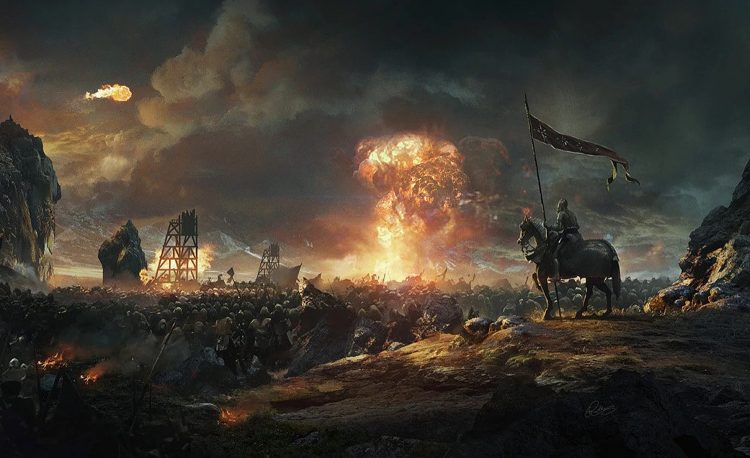
- Where do you think artists and game designers take inspiration from? Think about it, it’s a quite interesting question.
Using their highly destructive weapons, the army destroyed everything on its path, be it cities or local population that dared to resist.
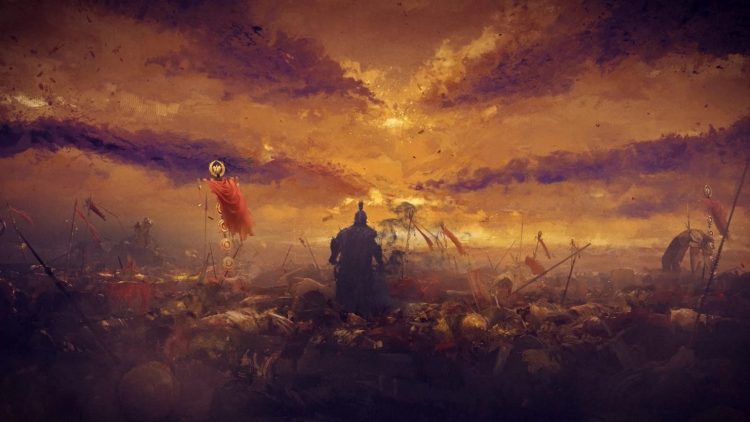
As years went by, almost no information about this army remained. Nobody knew where it came from. Nations that lived on the territory of modern western and eastern Europe were forced to migrate to unpopulated eastern lands. European cities in their turn were taken by the soldiers of the army.
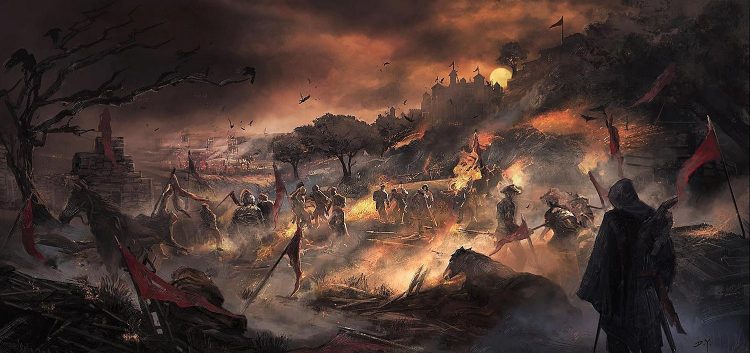
The scale of those events was tremendous – according to survived sources, mass migration of people involved numerous nations, starting from the Atlantic shores. Endless waves of people were moving to the east. There was one interesting detail – both the army and the nations that were forced to migrate had the same symbol – swastika. At the end of that war and mass migration, people settled on new territories and were given freedom. Freedom with some limitations that were set by the new authorities. That’s the only information that managed to survive in old folk legends.
Among the people who were forced to migrate, there was a tribe called Kurshaki (plural) [Translator’s note: Kurshaks for plural later on in this text]. The place of their historical origin was the so-called Kurshskaya Kosa (Curonian Spit). There is no historical evidence of their life there and possible struggle for those lands, but the fact remains – they left their home land and moved to the east. Another fact we know about this tribe, is that they inhabited various places along Baltic Sea shore as well as lands stretching from the territory of former Prussia to Saint-Petersburg. However, this tribe didn’t know any of these geographical names at that time. In fact, they didn’t even considered themselves Russians or Slavic – there were no such terms at that time. They considered themselves to be Irineans [Translator’s note: Ириней (singular), Иринеи (plural)]. Going a bit forward, there was an odd historical fact. At the end of the 19th century, for some unknown reason, authorities began calling these people Belopolyaki [Translator’s note: literally - White Polyaks/Polanders] and then, by a bit more politically correct name – Belorussians [Translator’s note: literally - White Russians] [Author’s note: please do not confuse them with the modern Poles (Polish people) or Belorussians]. White color was one of the most significant symbols of those tribes and the white light was considered sacred by them (later about this), moreover, their appearance fully corresponded to the white color. Everyone had blond wheat-colored hair, fair skin and gray eyes.
Upon migration to the new lands, the Kurshaki tribe settled at a shore of a big lake. It reminded them of Baltic Sea. Though, some part of their tribe went further to east with a small bit of people even staying at their home land, hiding in remote and hard-to-reach places. According to folk stories, a lot of Kurshaks settled near an area of modern time Pereslavl-Zalessky (near a lake named «Plesheevo»). Despite of all the difficulties, the separated groups of the Kurshaki tribe managed to keep in touch up to the 20th century. Communication between them stopped during the time of USSR. The part of the tribe that settled near the big lake, brought with them a geographical name of their former home – Ryazan. Their true Ryazan was left somewhere in the west. It probably still exists under a different name.
When the newcomers arrived in the eastern lands, all the cities there were lying in ruins [Translator’s note: they were lying in ruins as a result of the same war that occurred upon invasion of the unknown army]. What names they had before is unknown. But it is known that some survivors of those cities swore allegiance to the new authority, and for this were given parts of the destroyed cities for living and other purposes. There was one such particular town called Kasimov, presumably named after a leader of the surviving people. Kasimov’s inhabitants were given the right to preserve their language and culture. But it was the only case when survivors managed to stay and continue their living. Eventually, Kurshaks and Kasimov’s people grew friendly relationship and Kasimov’s people merged into the Kurshak’s culture.
The lake where the newcomers settled was named by them «Meshyo-ra» (according to their language - a lake of meshyans or a lake of citizens). The new «Ryazan» city had nothing to do with the modern Ryazan city nor with the place where it was allegedly destroyed by khan Batiy. The true location of the old Ryazan is covered by mystery (spoiler: it is near). The only thing known about the old Ryazan is that it was located at the crossing of several big rivers. It surely hasn’t become easier now, since most of old cities were located at similar locations. If we can’t see any water now, it doesn’t mean anything. We should find out instead, where did they go. There could be tons of reasons.
So, according to folk stories, the Kurshak tribe successfully settled at the south shore of the Meshyora lake, which is actually a set of spread mini-lakes and swamps nowadays.
Nevertheless, according to various folk stories, Meshyora lake used to be a big regional sea at the time when Kurshaks settled there. It had a direct water connection with Shatura in the west and Murom in the east. The whole southern shore of Meshyora was fully inhabited from Egorievsk to Goose-Zhelezniy. Even the ancestors of the author of this text lived there, in place they called Vereiskiy stan [Translator’s note: stan is an old russian geographical/administrative unit/division].*
* - When I heard the word «stan» in relation to Ryazan Oblast for the first time I was a bit surprised. At that time (1980s) this word was common among old local people and meant geographical locations. Moreover, it was a household word as everyone learnt it in school in relation to the infamous «Tatar Invasion», in which Ryazan played a major role. Being a curious school boy, I decided to ask my relatives about this word. Their explanation made me even more surprised. It turned out that all small lakes near the area of Spas-Klepinki used to be bays of a bigger lake, and there were various docking facilities for ships and boats. Those docks were the very thing called «стан» (or «пристань») [Translators’ note: пристань in Russian = dock in English]. The bays and docks disappeared at some point, but the word itself remained in the folk language, and stayed there for many years. So the alleged administrative units have nothing to do with this word.
Many years later, in 2017, I happened to visit Italian city Trieste, which became Italian since 20th century, upon dissolution of Austria-Hungary. It turned out that the city has a slavic origin, and its name comes from the words – tri stana (три стана = three docks). You can see those three docks in the sattelite images even nowadays, though two of them are buried and turned into city squares. In the photo below you can see only one of the two buried docks. You can find the others on the sattelite map without difficulty.
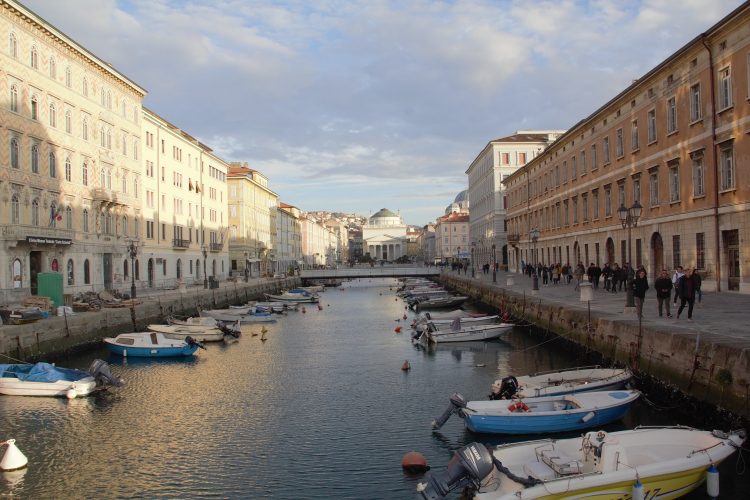
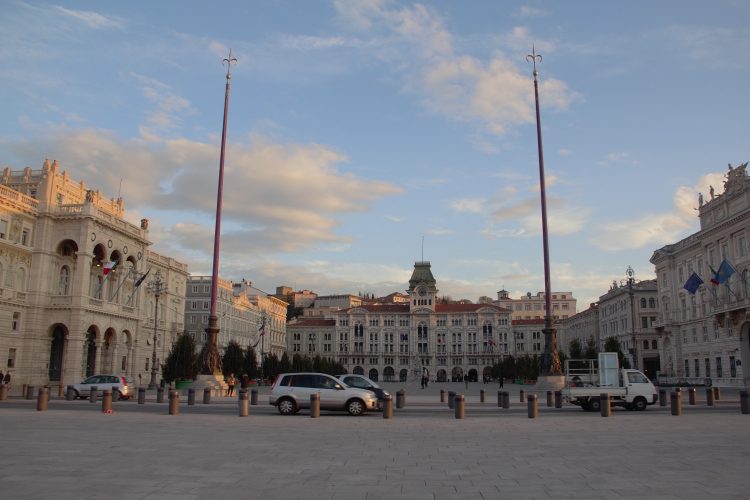
A dock was usually a dead end of a water path, where a palace was standing. Presumably, it was above one’s station to cross the final mile to palace on foot, so the docks were placed right in front of palaces’ entrances, so that people could enter them right out of their marine vessels. That was one of the purposes of such water channels. Even in the 19th century, city’s water channels and boats were an important and one of the main means of transportation. When I was in Rostov, I talked to some local elders who confidently told me that they used to have similar docks, when there was a big strait (currently non-existent) once connecting Azov and Caspian Seas. But they, as the phrase goes, know better.
Our Vereiskaya Volost [Translator’s note: small administrative district during imperial times] looks a bit odd. The main city is in the north, but the volost goes far to the south. There should be some logic behind this.
Where are the Ryzan’s docks? We’ll have to search.
It turned out that everything was not that simple there. At this point we’ll have to turn to folk stories about Kurshaks again.
The information about Kurshaks’ life after migration is very scarce, however this «scarce» is enough to make a whole movie about them. Even though soviet literature and movies depicted Kurshaks as weird red-necks, who wore bast shoes and worshipped idols, in reality, it was rather the soviet people who looked this way compared to Kurshaks. In the 19th century, Kurshaks were labelled as «old faith» followers, though Kurshaks themselves didn’t know that such thing even existed. They didn’t even know the word «faith».*
* - In my childhood, I used to be acquainted with many locals at Spas-Klepinki. Those locals were conservative, and knew a lot about the old times. There was one particular woman named Vera (Faith in English). Nothing special about it, Vera is a very common name in Russia (both now, and then). One day I managed to come across a necrological book, which was treated pedantically and filled minutely. I was genuinely surprised when I saw that, according to the necrological book, the real name of that woman was «Vereya». Moreover, all named of my relatives and of other people from that book were different from what they look nowadays. Of course the questions were asked. The first answer I received was – Vereya was an odd object from the past. The word Vera/Faith derives from this object, as there was some kind of affection that followed the usage of Vereya. Additionally, it became a female name, as it was a common practice in those time. The second answer was – all human names from the past times were suppressed by the soviet authorities. They were never written in official documents if they didn’t correspond to the accepted ones. To secure children during soviet rule, parents used to give two names – one official, and one secret. But this practice stopped after 1930s for some reason (we’ll come to this reason a bit later). The answers I received were quite convincing. At those times, religion was suppressed, and its sub-sects were suppressed even stronger.
My analysis of various folk stories about the Vereya and its description led me to understanding that it was a construction of some kind that resembled carrousel. But in its original look, it was a giant carrousel.
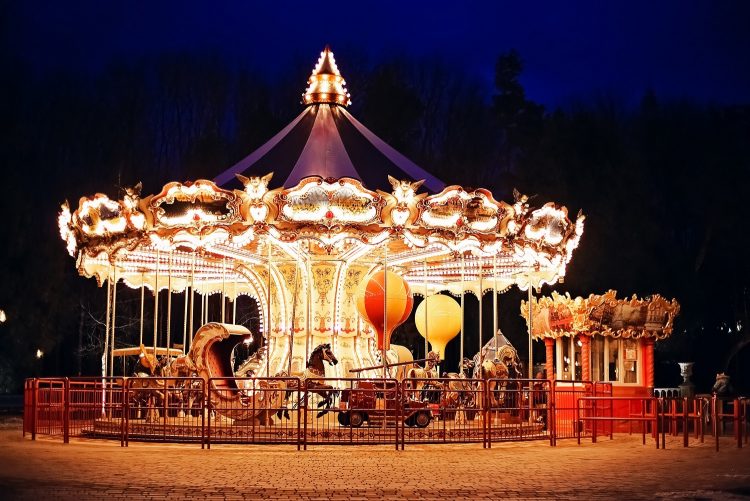
Vereya could also be made out of improvised resources, mainly ropes. The key part was to make those ropes form a range of connections between the dome and the ground. Improvised vereyas were usually portable.
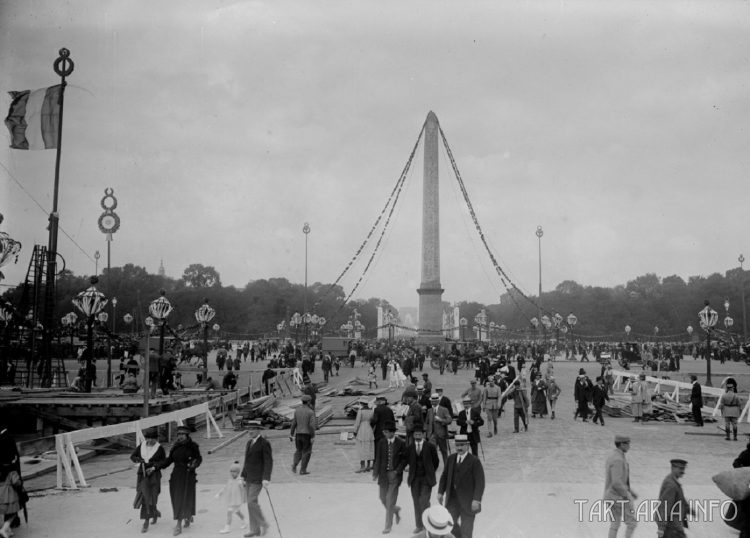
There were also more complicated vereyas, which were made of stone and iron. Such vereyas were stationary.
In the 20th centuries such constructions were also used as various booths.
Or just as ordinary urban decorations.
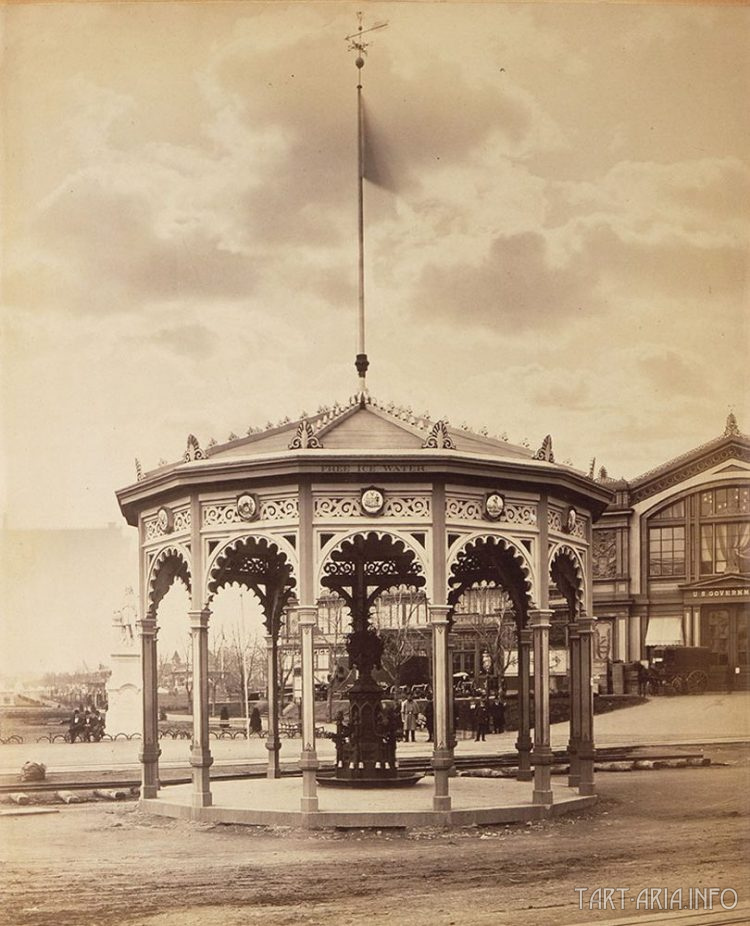
But in memories and stories of Kurshaks, vereyas were important devices. Devices, which made human feel some kind of state of enlightment. This effect made humans forget about everything bad, so all people and their deeds very positively charged.
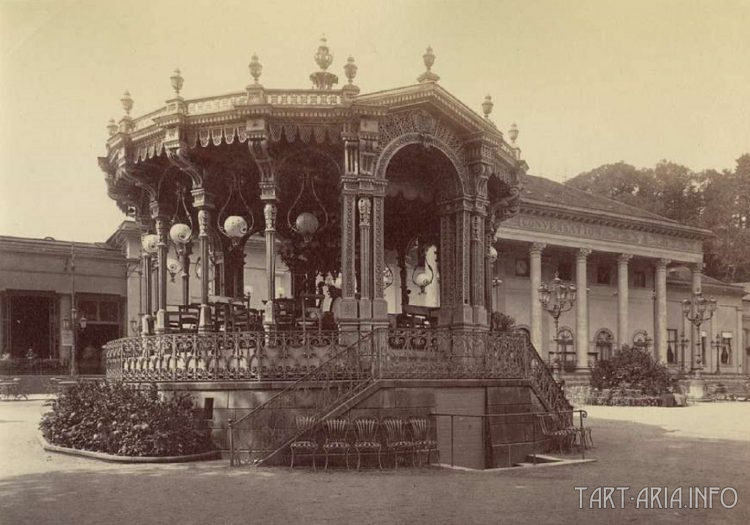
Vereyas were usually surrounded by beautiful gardens, and had an orchestra playing inside, which made human feel an indescribable spiritual uplift. People were connected by a special «language» («язык» in Russian), which has nothing similar to any known human language. That’s why those who used vereyas were called «язычники» («heathens» in English). Nowadays this language is lost.*
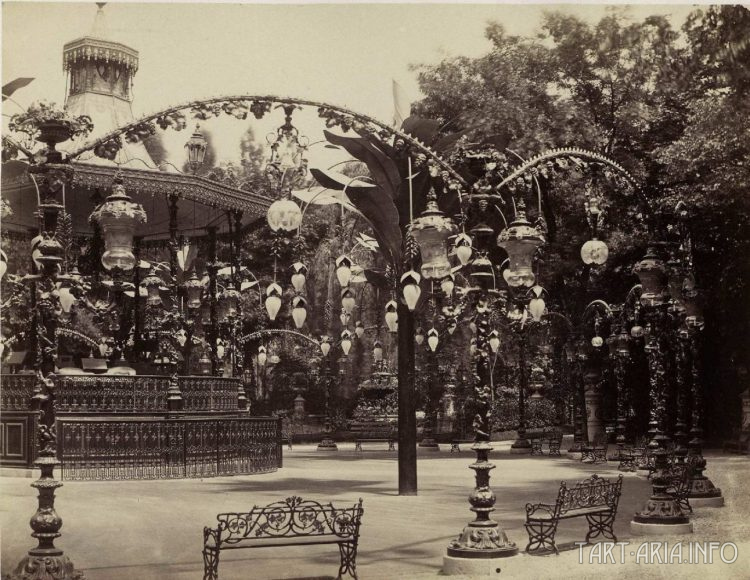
* - Recently I stumbled upon an interesting discovery while analysing various musical kiosks. It turns out that the so-called american word «Jazz» is very similar to the word «язык» if you read it as «yazz», instead of «jazz». According to the official history, jazz was a subculture of african-americans who fought oppression of american capitalistic system (as we were taught in soviet schools). But how did it get into USA, if African people have nothing similar to it in their homeland?
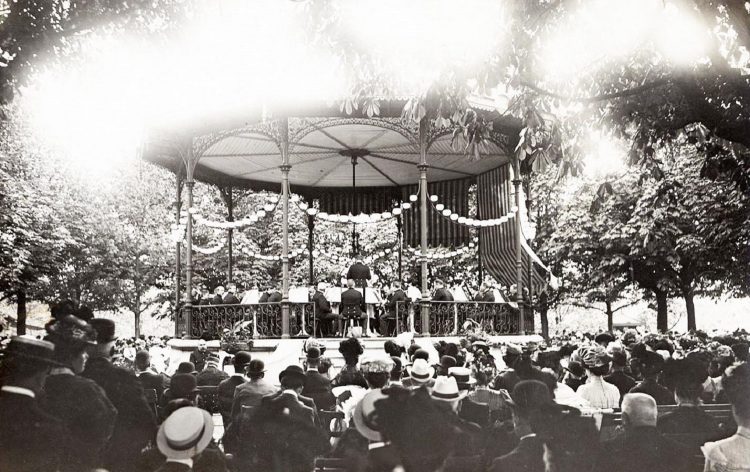
But it all gets a bit clearer when you look at an old 20th century map of underwater communication cables.
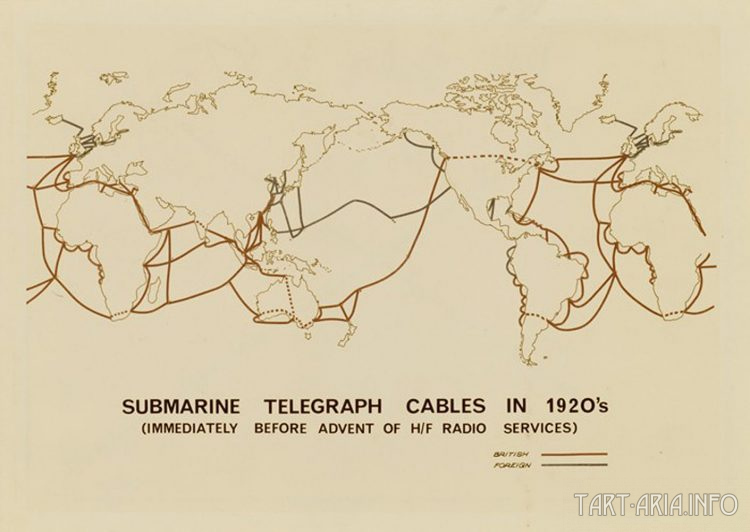
You can see that cables connect places like Vladivostok, Port-Arthur, Guam, Alaska and Oregon. It’s not hard to guess whose cables these are. More curious is the fact that the same cables connect South America and the northern part of Gulf of Mexico. Who lived there? It’s not a coincidence that American Civil War of the 19th century is one of the most classified topics in american history. There are almost no photos of real battles available, despite the fact that photography was thriving at that time. The same situation can be seen with photos of Franco-Prussian War battles (only photos of consequences of those battles).
What could connect jazz and heathens? I suppose that you’ve already guessed. James Fenimore Cooper obviously implied someone else under the name of «Mohicans» in his writing (titled the same as the name of this article). Or maybe, he wrote it the way it had to be written, in order to bypass literature censorship, which is well known for changing various writings due to political reasons. The Mohicans disappeared, by vereyas got adopted by another culture (for a short amount of time though).
According to legends, vereyas, being placed near a water pond, inspired the fish with some unusual emotions through the so-called «language» (that I mentioned earlier) and made them jump out of water (that’s why the ide fish was called «язь» in Russian language [Translator’s note: «язь» and «язык» are words that have the same root]. Birds used to willingly fly inside cages made in the form of vereyas and joyfully sing there with no intention to fly away. All animals, including various flies like mosquitoes, were attracted by vereyas and uplifted into a higher state, currently unknown to them. It was a harmony between nature and every living creature.*
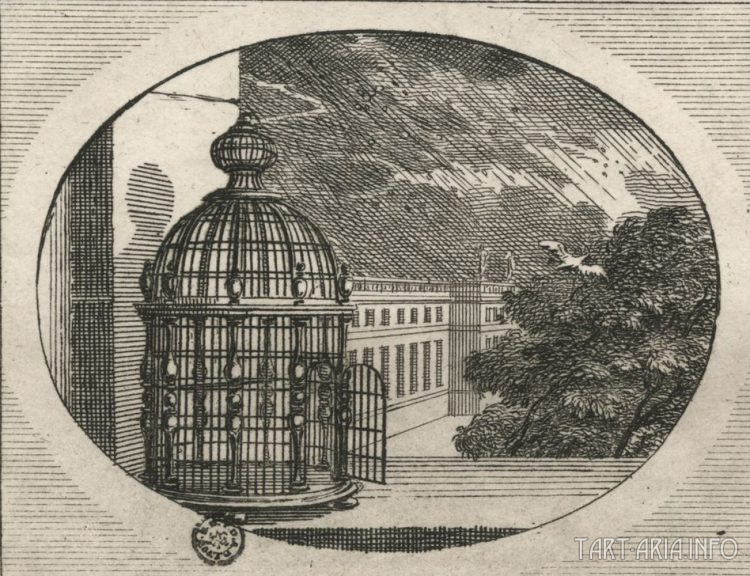
According to Wikipedia, the golden age was something like this: «"Golden Age" denotes a period of primordial peace, harmony, stability, and prosperity. During this age, peace and harmony prevailed in that people did not have to work to feed themselves for the earth provided food in abundance. They lived to a very old age with a youthful appearance, eventually dying peacefully……»
At the very same time look at this bizarre modern «reconstruction of a heathen temple»:
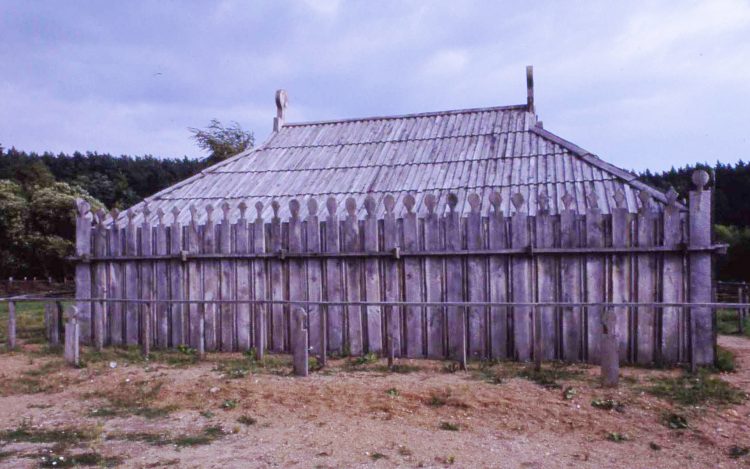
There were also several curious details concerning Kurshaks’ life during soviet rule. Firstly, Soviet authorities forbade them to keep vereyas in their original design and construction and forbade them to make portable vereyas (because it could be easily turned into a powerful weapon). Secondly, they forced Kurshaks to use attributes previously unknown to them (I hope you understand what I am talking about). Thirdly, every stationary vereya was imposed with a tax. Everything other related to Kurshaks didn’t really matter to Soviet authorities. It would be fair to say that they almost didn’t notice them. There are also no mentionings of military conscription cases at that time, nor any other manifestations of serfdom. There was no one to fight with. All communities were friendly. It was also impossible to behave antisocial under influence of vereyas. People lived joyfully and in harmony with themselves and with nature.
In the very same Vereiskaya Volost Kurshaks built their own huge stationary vereya, which became a town-forming object. Due to its extraordinary beauty it stood out from the list of other vereyas located there. Every Kurshaks’ town had a stationary vereya, but this one was probably special. Based on descriptions, it looked similar to this:
The original one should have looked the same except for the caps on the domes (there used to be special glass spheres before, that shone with bright white light).
As an old russian tradition suggests, severeness of laws is compensated by optionality in their abidance. Even though Kurshaks’ vereyas were aritificially filled with alien religion’s attributes, they still followed their original beliefs and didn’t even notice them during their «ceremonies».
All people (no matter what age) visited vereyas each day (even guests). They conducted there some special ceremonies (or mysteries, as they were called later in the 20th century). They didn’t have holidays as we have nowadays. There were only some special days determined by solstice, during which you were not allowed to eat meat (as it was somehow blocking the ability to receive positive effect from vereya). During the ceremonies, people sang special songs (text of these songs haven’t survived till our days). It is known that those songs praised sun, earth, water and other natural forces, as well as their sacred objects (that had vereya functionality). All songs were followed by an emotional uplift, which happened absolutely voluntarily.
Vereyas usually had a maintenance staff (who were allegedly called «схима» or «хима») who looked after its technical components. The main person out of the maintenance staff was named «схимник». Also there usually was a storage room of all the necessary expandable supplies and tools. The maintenance staff used to be appointed by the community. Novice «схимники» received knowledge from the more experienced senior colleagues. Hierarchy didn’t exist in their communities.
As you may have already guessed, that vereya was destroyed many years ago. You can’t even find information about the time it was demolished, which means that it was really long time ago. However, I managed to find something.
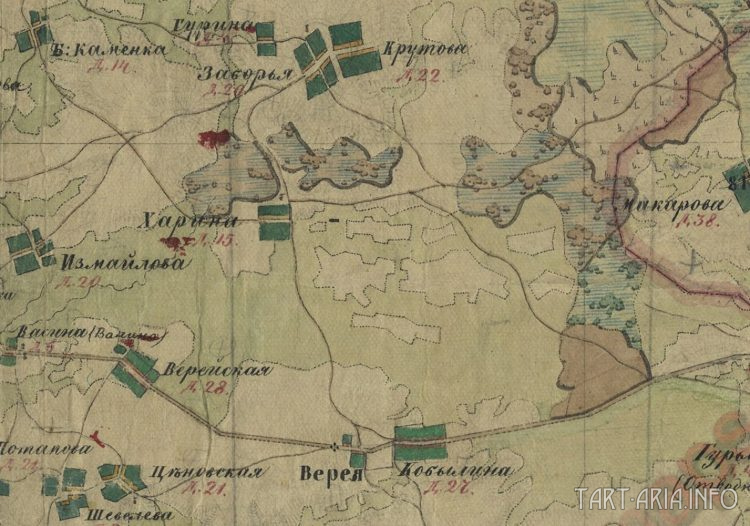
An old map of unidentified age reveals a town with a name Vereya, with a cross mark marking an object of cult. All objects like vereyas were marked with such symbols on maps. Let’s look at what we have on the modern map here.
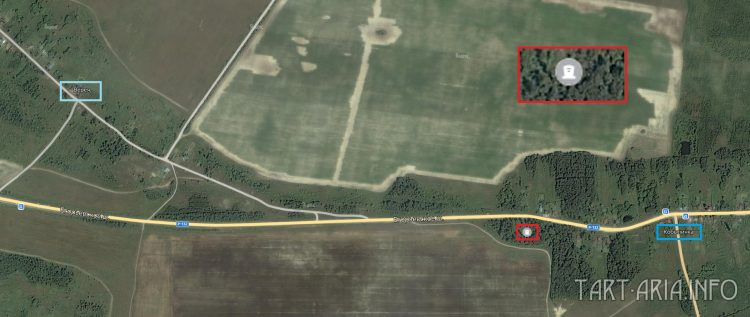
It was not hard to find this town on the modern map. The place where the vereya once stood was turned into a cemetеry. When I came to this place, I didn’t find anything interesting there, just a common creepy graveyard. But there was something else that caught my attention.
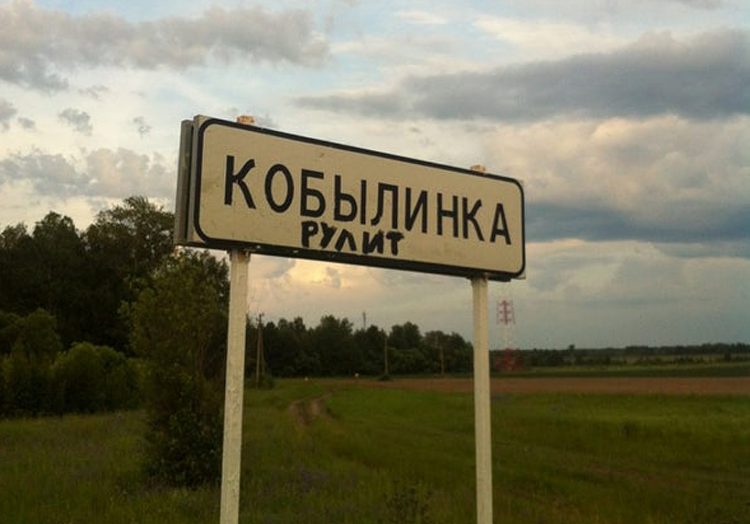
According to folk stories, the above mentioned vereya used to stand on the shore of the Meshyora lake. Moreover, not just on the shore, but rather at the crossing of two water paths. The same story tells us that there used to be many of these water paths at that time. The task of figuring it all out was made even more difficult by the fact that both modern and old maps didn’t show anything like that. That’s why I had to find a work-around.
As I have said previously, authorities made a tax for keeping a vereya. But I haven’t told you that this tax didn’t imply payments with money. Kurshaks didn’t even know about money (at least until the 20th century). They paid the tax with food and natural resources. The main natural resources there were wood (according to some stories, there used to grow some unusual types of trees) and iron. Even though, the main natural resource extracted in Meshyorskiy Kray nowadays is peat, there are no records of its extraction at the time when Kurhsaks lived there.
One of the survived traditions was a very gentle attitude towards wood and forests, as it was believed that wood somehow reacts to the «language» of vereyas. For this reason, wood was treated with extreme caution to avoid its damaging. Woodmen used only wedges, axes and carpenter’s planes to process wood, and avoided using nails and staples. Dwellings were made in an appropriate manner.
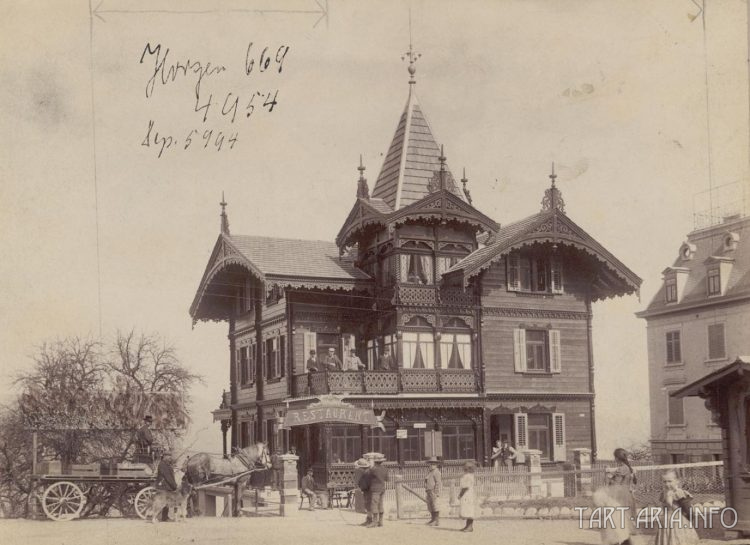
Kurshaks called this type of dwelling – «terem».
Wood that was gathered for tax payments was shipped by boats over water paths. But there was a very curious detail concerning this process.
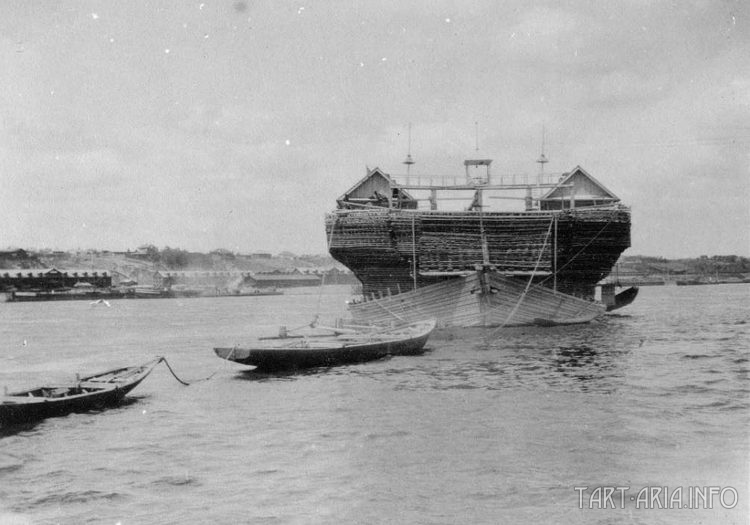
The ships that carried wood were made from the very same wood and were called «беляна». This belyana moved without oars and or any dependancy on the stream’s direction. Upon arrival to a destination point, belyanas were disassembled and the wood it was made of was utilized too. This information brings up more questions than answers. One of the details that comes useful is the fact that above-mentioned water paths indeed existed, but where were they?
Iron extraction is a bit more curious story. Production of cast iron out of bog iron has always been a common practice, even before Kurshaks came there. All communities had iron production facilities. Official history assures us that a certain merchant family named Batashevi used to own all iron production facilities in this area, but folk stories have no confirmation of this fact. Maybe it is some kind of a red herring? According to official history, Batashevi owned a network of facilities, including: Егорьевск, Спас-Клепики, Тума, Гусь-Железный (the place where they lived), Сынтул (Маккавеево), Колпь (Рудово), Выкса. Every iron production facility should have had a waterpath nearby (which served as a logistical route). It is iron, after all. You can’t transport much of it over cross-country terrain using a wooden wagon. Then how could it all work? Let’s look into a map again.
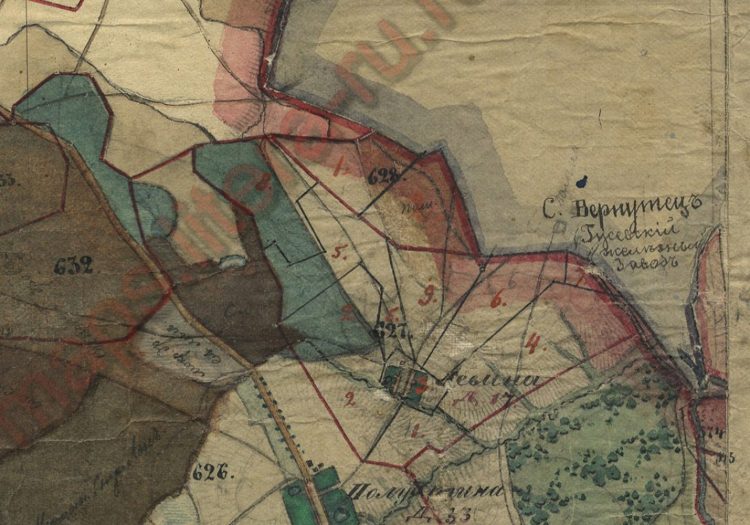
Judging by the map, Гусь-Железный borders Владимирская province. But from the wiki page we know that there should have been a lake somewhere, as Batashevi built a barrage in Гусь-Железный for some reason. It is known that this barrage raised the water many meters up which in its turn created the above-mentioned lake. It is also known that the barrage used electricity, but how did they generate it?
Another question is, how could that lake look on the map? I tried to connect all old iron production facilities with a line and here is what I got:
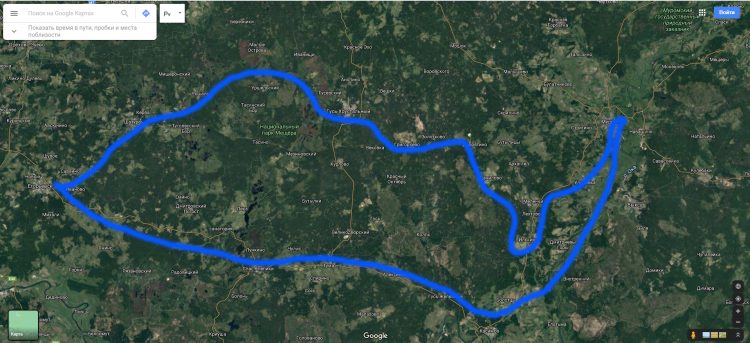
Everything starts to make sense now. The main thing we found – what «Гусь» is (or «Колпь» in Kurshak’s language, which is a name of a river). Kolp connected Meshyora and Oka in the area of Murom, until disappearing. It was also a strategical entrance to this water basin. Upon Колпь’s disappearing, various names related to it continued to stay on maps. Even nowadays many small rivers there are called «Колпинки».
Well, it’s all great, but where are the above-mentioned Razyan’s docks? Let’s search further.
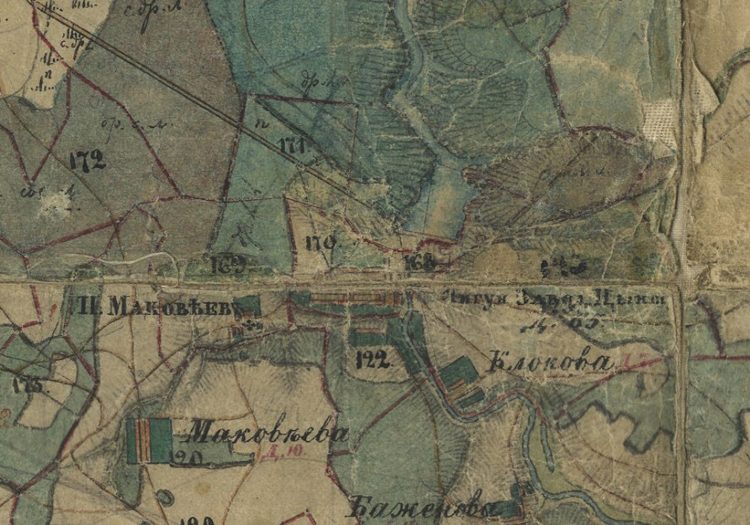
The iron production facility in Сынтул (Маккавеево) is designated on the map as «чигунный» [Translator’s note: чигунный or чугунный means made of/related to cast iron] and also this map doesn’t tell anything about Batashevi. Another curious fact is that all iron production facilities in this area are designated particularly as cast iron facilities. Now, let’s figure something out: do pure iron and cast iron differ in terms of anything except for the known additional components?
Here probably comes the main secret that I received from the conversation with my grandfather’s sister I mentioned at the beginning. In those times, iron (железо) and cast iron (чугун) were indeed different things and even different concepts. Kurshaks considered cast iron to be the same thing that we consider it nowadays – an alloy of iron and carbon (and some other components of certain percentage). But as for the iron (железо in Russian) – it was considered to be a kind of organ [Translator’s note: to understand the connection between iron and an organ, you have to know that the russian word «железо» can have two meanings depending on pronounciation: the first is iron (pronounced zhelEzo) and the second is gland (pronounced zhelezA)]. Its functionality (scientifically saying) is to produce specific substances of chemical nature. The common trait between artificial organs and cast iron was that both were encased in iron (as a chemical element Fe), and sometimes in iron that had the same properties as cast iron. In those times, chemical element «Fe» was exclusively called «чугун» (cast iron). There wasn’t even a term «steel».
[Translator’s note: later in the text, the author will be using the term «zhelezA» a lot, so for your convenience, this term will be replaced with «iron device», to make it more understandable.]
Nobody remembers anything about Batashevi, however, everybody knows well that there used to be a huge iron production facility in Gus-Zhelezniy that shipped the above-mentioned irons devices (желёза) to the czar’s court. And the most important thing produced in Gus-Zhelezniy facility was the stuffing of those «iron devices». It was the most valuable part. Encasings didn’t really have any particular value.*
* - The Batashevi’s castle in Gus-Zhelezniy is well known about. There are even movies about this place (some have been aired on TV). People who visited this place recall that there is an urban legend about Batashevi which tells that they tried to create a Philosopher's stone, and also about vast underground tunnels filled with treasures.
I guess that you’ve understood what stands behind the Philosopher's stone creation. I wish there was at least 1 litre of this substance hidden somewhere under their castle. But if it had been there, there is no doubt it would have already been taken out before us.
Besides the facility in Gus-Zhelezniy, every community had their own small iron production facility with the same purpose. Kurshaks learned to extract all the needed components out of bog iron, while any other missing components could be obtained via trading. Kurshaks considered all iron devices to be sacred because they emitted light [Translators’ note: in Russian language, the word which stands for «sacred» or «relic» is – «святыня», which is very similar to the word «свет», which means «light»]. They considered them to be a key to life itself.
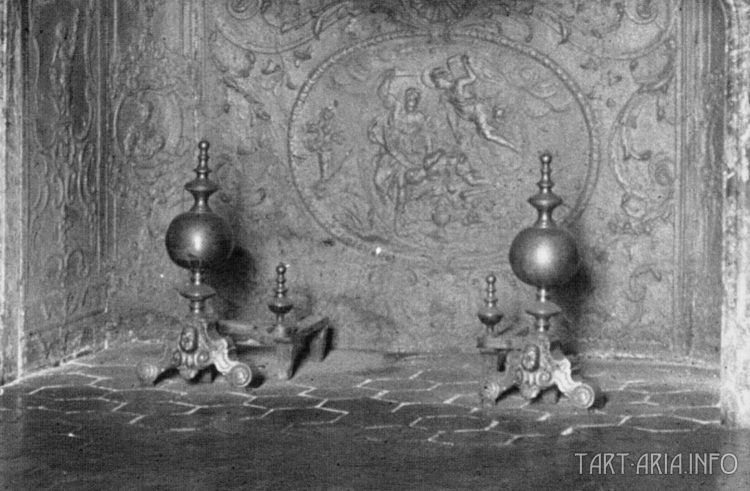
These iron devices were most commonly made in the form of sphere and had a lot of applications. One of them was using it to heal various human diseases. Every community had a person called «zheleznyak» [Translators’ note: approximate translation of this word is «iron man» or «someone related to iron»]. This person had nothing similar with a blacksmith (which in his turn worked directly with iron metal, going from ore to a finished product). Zheleznyak was a doctor, who knew how to heal diseases with iron devices. He had a full inventory of various tools, currently unknown.
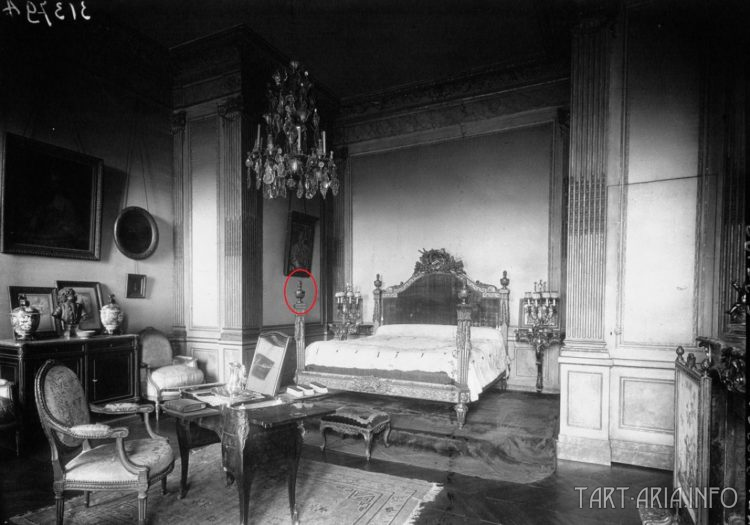
Few people know that Zheleznyaks even used special healing beds, which helped a person to regain a healthy and deep sleep. Kurshaks, with all their love towards wood, slept on beds exclusively made of iron (and equipped with iron devices that gave those beds special healing properties).
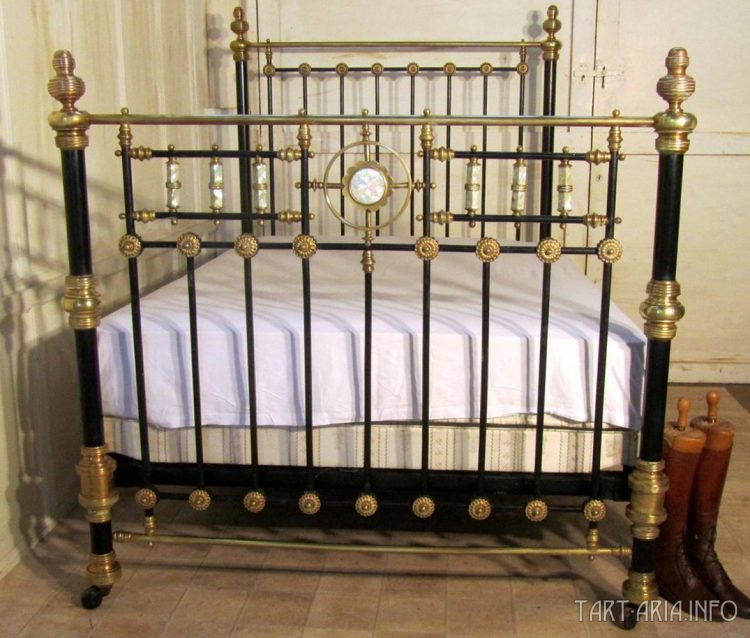
Nowadays, you can find such beds only in museums, but in those times, it was a must-have item in every house, no matter whether it was a simple peasant or a king.*
* - In 2017 we tried to resurrect this technology for the first time. For this, we had to ransack one abandoned house in Italian city Trieste, in a hope to find any remaining «iron devices».
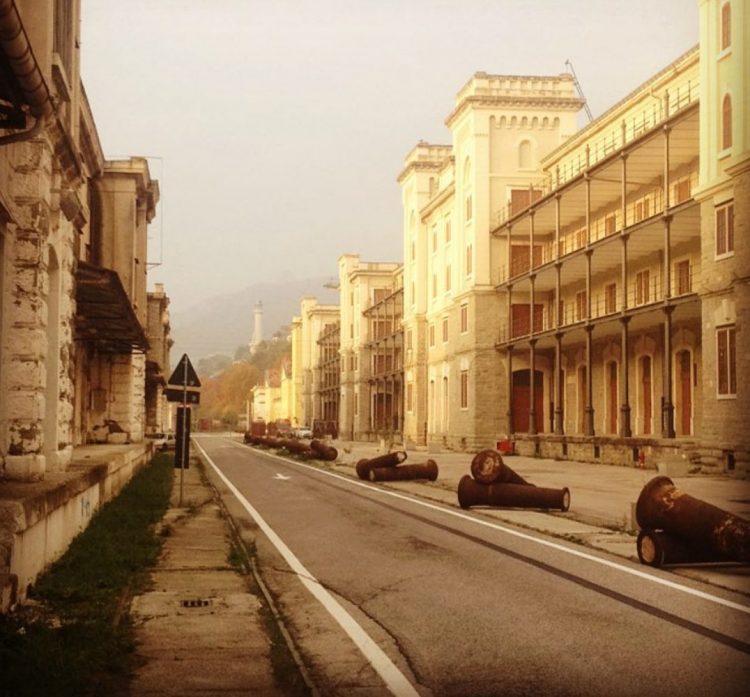
We had intel that this building had what we needed. A NATO military unit and a customs area nearby gave additional adrenaline rush to our plan. The task was not easy, but we had a chance to find a sample. Luckily for us, Italy has kept its architecture untouched (contrary to Russia). Many antique houses have been standing abandoned since WW2, with all the stuff left by former owners inside. The building we were going into looked as if it was abandoned just a month ago. Though, in reality, it was left in the first half of the 20th century (by latest). But….unfortunately, all devices had been stolen before us. All the places where the devices had been kept were unsealed, including stashes inside walls, and vessels on the roof. They even used explosives at hard-to-reach places, presumably thinking «if we don’t get it, nobody gets it». It was a pity we didn’t find anything, but at least we received unique experience.
But that’s not all secrets I got from the conversation. It is known that Kurshaks didn’t use any herbal beverages for healing purposes (which is widely practiced nowadays). They considered it to be dud, because without a proper iron device, herbs didn’t produce any healing compounds during their growth.
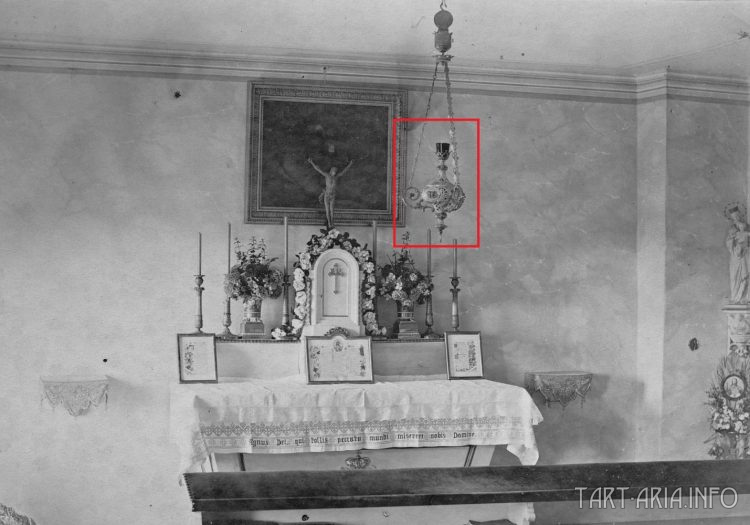
But if you had a proper iron device with proper herbs, you could use it like it is shown in the photo above. This thing had some special herbal mixture inside that was activated using the power of an «iron device», while the whole thing was connected to the metal framework of the house. Influence of the iron device on the herbal mixture caused the latter to emit vapours into air that had unique healing properties. People that knew how to use and tune up these devices were called «знахари» (znahari) [Translator’s note: English equivalent is shaman/sorcerer/witch doctor]. So the secret wasn’t actually in the iron device, but rather in the right herbal mixture (if we are talking about a device like in the picture above). As for the iron devices in general, everybody knew about them and could even produce one at home.
If you put oil of a special chemical compound inside one of those iron devices, it started burning with extraordinary fire which didn’t emit heat. According to some sources, this fire even had different colors. For years, it had been known as a «burning bush» or a «holy fire». Before being turned into the well-known oil lamp, these lamps were used for many unusual purposes, which are hard to believe nowadays.
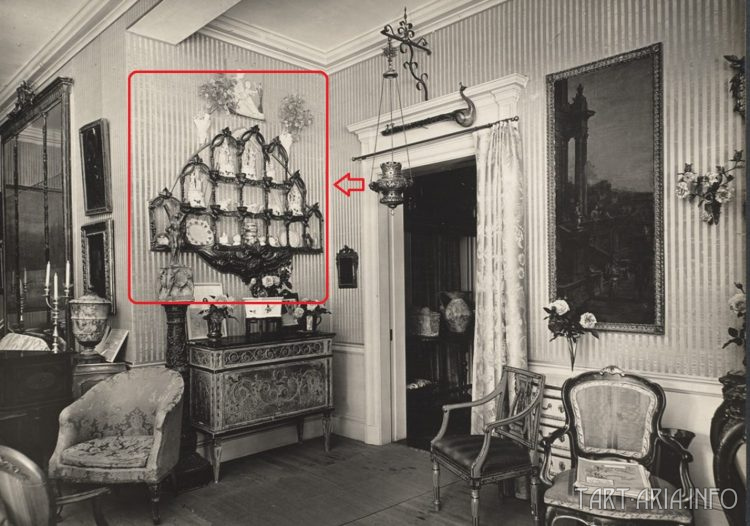
Every house had a device, that looked like the one in the picture (encircled), which was called «складень». In its original design, these things used to have special mirrors, which, upon being shined at with the above mentioned «holy fires», showed marvelous images. People could see spirits of dead people and even communicate with them using thoughts. But the production of such mirrors stopped long time ago. By the way, all vereyas used to have them too, but they were eventually forced out and replaced with religious icons, however, it is a completely different story.*
* - One day when I was in Europe, I came across a curious company, owned by an old man (who was once a quite high-ranking official in Russia). That company had similar goals of resurrecting the old technology, but they did it cunningly. Their official cover story was that they were repairing old mirrors, but in reality, they needed them for experiments.
Another remark that I’d like to add, is an occasion that happened in 1985 in Spas-Klepiki. I managed to find one old book in the garret of my house, in a pile of old clutter. This book was read to tatters and didn’t even have a spine. The book was about different ways of fortunetelling for women, written in old Russian language. One of the ways closely described a device similar to «складень», mirrors and «holy fire». Unfortunately, I haven’t been able to recall those details. I wish I had that book with me now…
All the things described above were just a small part of capabilities that Kurshaks possessed thanks to the «iron devices».
They could create artificial gardens where everything could grow. Iron devices greatly amplified the growth and quality of plants.
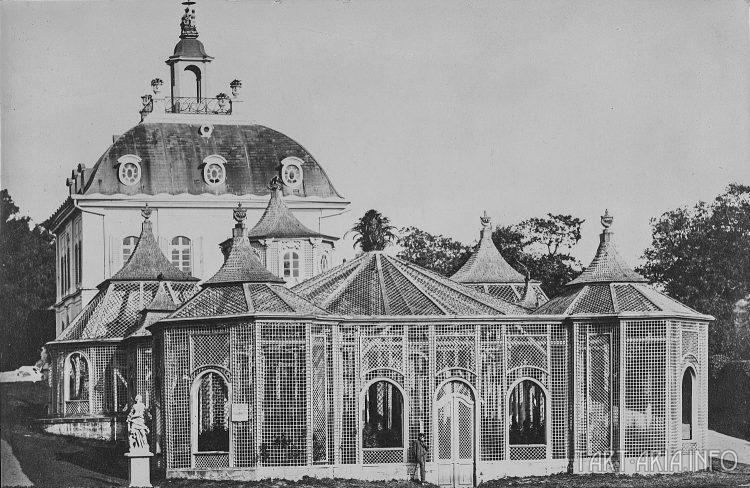
They could build self-moving equipment for forest and agricultural needs.
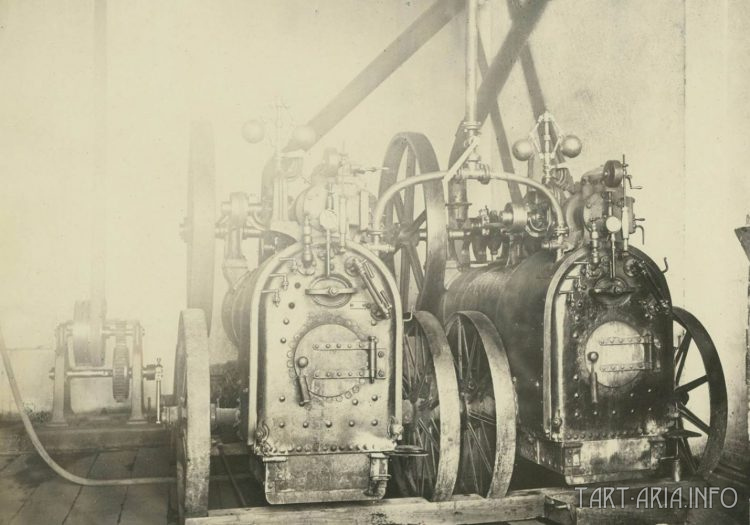
They could light up the streets.
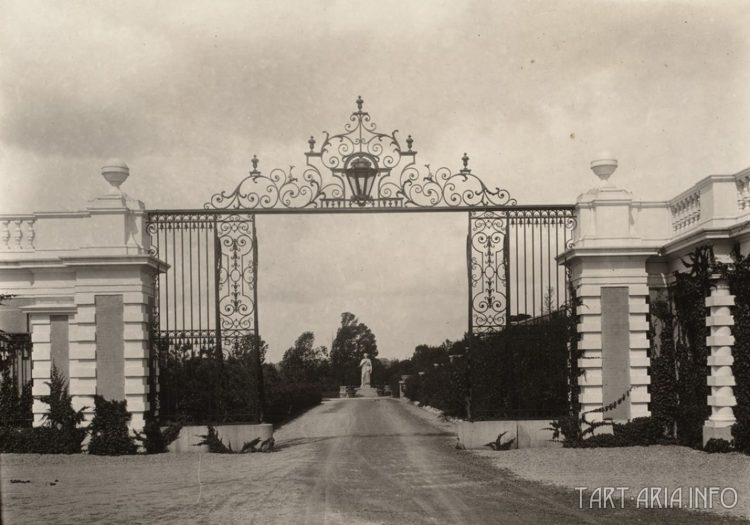
They could build ships and docks with vereyas.
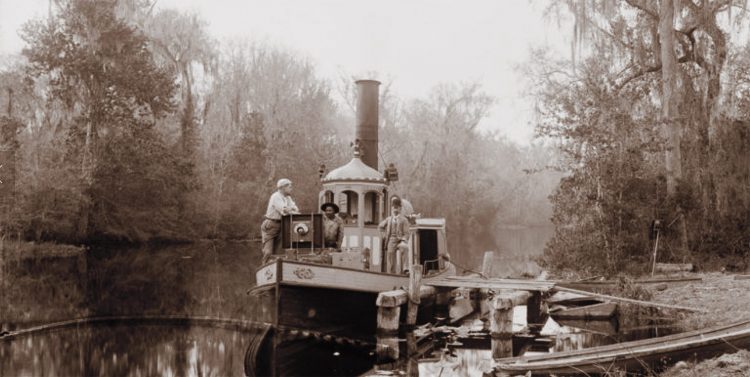
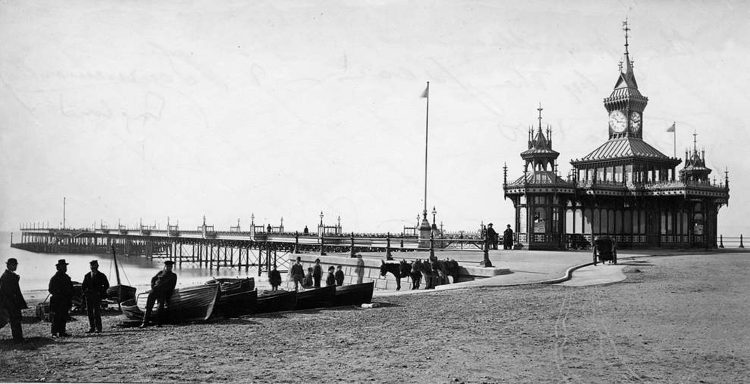
It was a golden age, literally. People lived in harmony with everything that surrounded them. It was all possible thanks to the old technology that they brought there from the west, where they received it from their ancestors. Iron devices in their turn worked using a special invisible wind called «Зехир (Зефир)» [Translator’s note: it’s the same as «Эфир» which means Ether in English], which blew in various directions, changing over a certain period. This wind was widely depicted on different attributes and clothes of those people, and they were proud of it.
Their children were born happy. Vereyas helped them to stay healthy and physically fit for the whole life. Nobody new what substance withdrawal syndrome was. Nobody drank alcohol. Nobody had troubles with getting resources for living or getting food. There were no mortgage slavery. There was no crime. Life was completely different.
But one day, everything changed.
Apocalypse chronicle
One day, the Army came back. But this time, they came from the skies. They had strange aircraft which looked like huge zeppelins. These aircraft had coats of arms that looked like circles*. Without any warning or explanation they started destroying everything on the ground. Once again, unknown powerful weapons were used. Enormous lightning strikes hit the ground from the skies. All big constructions on the ground got destroyed, including vereyas. Shortly after the attack, water basins (including Meshyora) started rapidly disappearing. The territory of Kurshaks community was filled with dead bodies and wreckage. Those who managed to survive for some time were tearing around until being wiped out by one another wave of attacks. Army’s advance weaponry melted metal and stone, nothing could stop it. Everything was done in a very short time. People could not resist, as they didn’t have anything similar in their arsenal. The skies were blackened with smoke so much that even sun couldn’t be seen. It all looked like a well-known story from the bible.
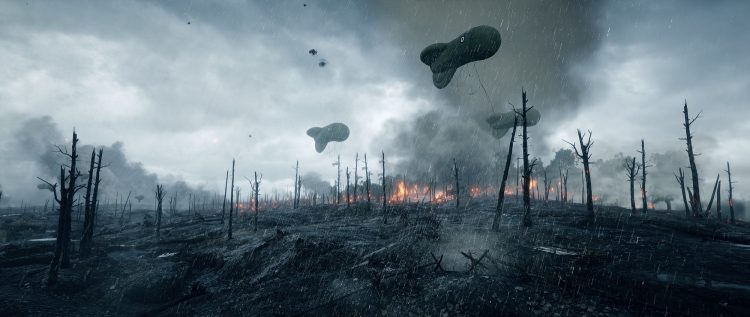
* - Concerning the roundel coat of arms, I can recall this symbol from various movies and history books, but according to Wikipedia, the French Air Force was the first to start using it as their military insignia. But were they really the first? A symbol that came out of nowhere all of a sudden? It never happens this way. I guess this emblem is much older than 20th century, but exact answers require further investigation.
The remaining survivors managed to hide in the disappearing waters of Meshyora lake and other nearby water basins. Attacking aircraft left upon completion of their task and nobody has seen them since. Another fact that managed to survive to our days is that those catastrophic events happened simultaneously at a very large territorial scale. Almost everything was gone, including all vereyas and forests.*
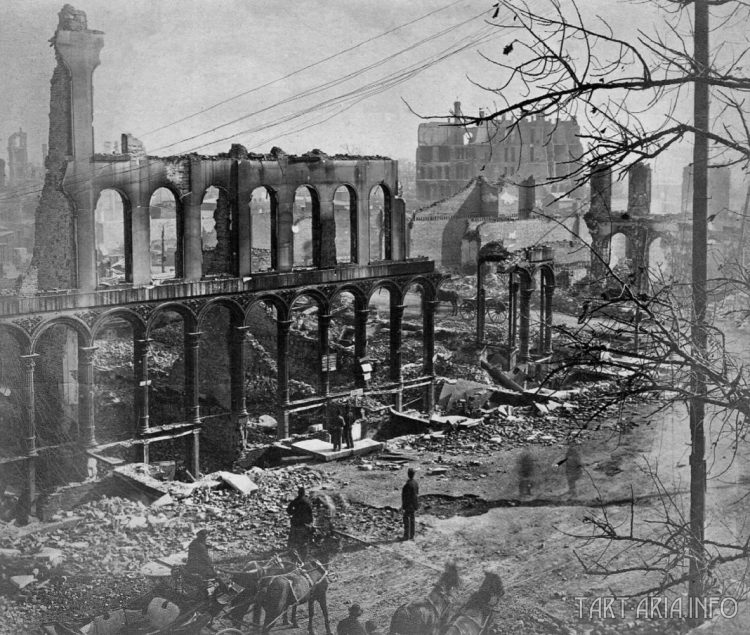
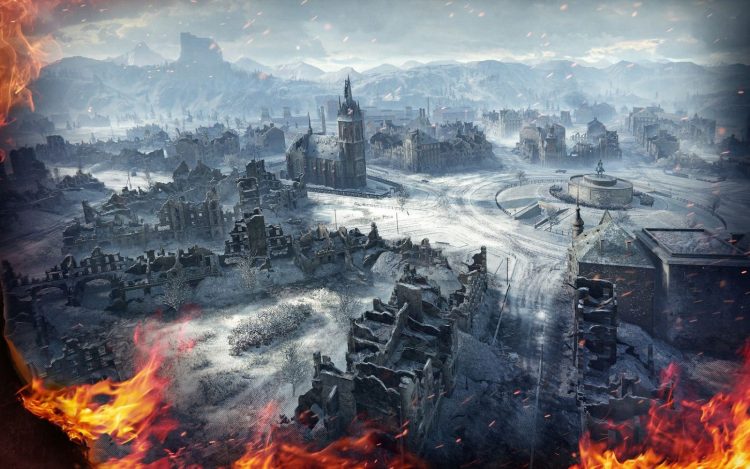
* - Many regional sources of Gus-Zhelezniy claim that the Batashevi’s barrage (that formed the huge lake there) was destroyed in the 1920s by a flood (or due to some other natural reason). I guess it’s completely not true. That barrage was destroyed much earlier, as in the very beginning of the 20th century, the bottom part of the former lake’s land was filled with villages (near the side of «Тума»). There are a lot of discrepancies surrounding this place, so it turns out that the events that we are told happened in 1920s in reality could've happened 50 years earlier.
Those who managed to survive never returned to the places where they used to live. Being scared that everything might happen again, they hid in hard-to-reach places, starting new life that mainly associated with survival. Moreover, shortly after the purge, weather changed dramatically. Enormous amount of precipitation blended with dirt and sand fell from the skies. All ruins, fallen forests and water basins got buried by it and then frozen by frost. The frost came off soon (only reappearing for some fixed periods of time later on), but local waters started to behave oddly. All waters that had underground supply started disappearing and reappearing with a 12-year period. Reappearance was usually followed by local floods. This process was happening for years, though becoming less noticeable over time. When waters disappeared, fires happened quite often, burning down leftovers from the last catastrophe. Over some time, the fallen forests that had been pressed down by dirt decayed and formed peat. This peat became a new problem for people during droughts, but that happened later.
A year after the catastrophe, some people that wore steel knight-looking armor, started searching the ruins. They were looking for the iron devices and for what was inside of them, as well as for any items that contained gold. When they needed man-power to clear the ruins, they used slaves/prisoners. If they noticed any witnesses, the latter were shot without any warning, with the very same unusual powerful weapons. If they had to destroy something that hadn’t been destroyed during the invasion, they did it. «Knights» usually didn’t go far from the places where ruins were. Survivors and their new homes were not their target at that point. The knights came only once, and since then, nobody has seen them again.
The next type of threat were groups of man-hunters who always came in big armed groups. They wore casual clothes but used the same unusual-type weapons of high power. They captured everyone who stumbled upon them. The caught people were tied up and driven away in an unknown direction. Those abductees who for some reason were unsuitable for their purposes were killed on the spot. Those man-hunters were scavenging the area for a very long time. In order to survive, people had to hide in places that were almost unreachable for outsiders. There, they built their new homes and learned to provide themselves with everything they needed for survival. They didn’t leave their new safe-area for a long time. A time long enough for a new generation to be brought up.
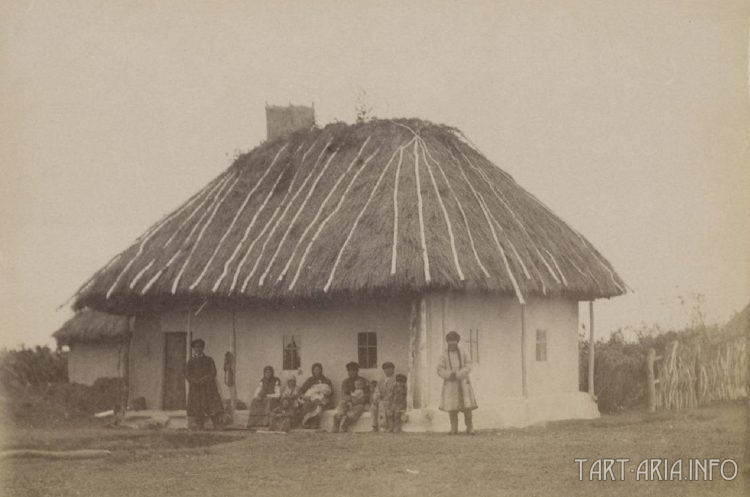
At this point happened a terrible thing that bared the nature of a human being. Kurshaks, being so used to the «golden age», had to face a new harsh life, full of evil and misery, which they were absolutely not ready to overcome. Almost immediately, highly-civilized people started behaving like animals. It is so sad and ironic to hear that people who just recently possessed super-advanced technology (uknown to us nowadays) so rapidly turned into primitive biological beings who were ready kill, enslave and even eat their former brothers. Conditions were so extreme and mad that people were either killed by their fellow tribesman or by man-hunters (if they decided to leave their home). The scale of disunion was so high that people could trust only their closest relatives. What was maintained before by ideology and vereyas, now had to be forced by strictest discipline. The remaining knowledge about the past and the recently-used technologies was given to new generations, but each new year spent in isolation worsened the situation. Each new year, the former culture and knowledge diminished, because consciousness is unfortunately determined by social being.
Without former knowledge and vereyas, people degenerated. All families tried to produce as many children as they could, in order get more hands capable of working (thus increasing the chances to survive). Women gave birth to children each year, but still, weren’t able to raise as many kids as they needed.
People found a way to feed themselves with anything they could find nearby. They hunted to extinction almost all animals in their vicinity, including even wild wolfs. They also gathered berries when it was possible. But the scariest thing was not the lack of food. The Army’s powerful weapons, which targeted Kurshaks and other people of that time, had terrible effects on human body. It is unclear how exactly it affected people but the well known illnesses like plague and diphtheria were one of the consequences of the weapon’s usage. When the powerful weapons were hidden or restricted from usage, those mass illnesses disappeared.
Wars were waged everywhere but nobody knew where exactly and why. But Kurshaks had enough of them. The echo of past war (which was rather an extermination for Kurshaks) was haunting them for many years, as well as the above mentioned problem with terrible illnesses that came as consequences after exposure to super weapons. People tried to heal them with any means they had. Fortunately, some knowledge about past medical technology still remained. All families tried to re-create iron devices and vereyas, but few managed to succeed. At some point, man-hunters disappeared and it became safe to get out of secure areas. New authorities summoned people to convince them to relocate to normal cities and towns. People that could still understand* what’s happening took this call with mistrust (*there were a lot of mentally ill people). They got out of their shelters much later, when they were completely sure that nothing threatens them.*
* - There was one curious detail that I was told by my grandfather’s sister. She told me that one day she watched a movie called «Люди на болоте. Полесская хроника» (when it was shown on TV, during soviet times). She watched it attentively, and noticed that the movie’s plot seemed very familiar to her. It resembled her father’s life story (my grandfather). When he was young, he was summoned to get out of shelter too. But it happened 50 years prior to the time shown in the movie. It was hard to match it exactly with the real-life timeline. Even though a few generations passed, it should be stated that those generations of people lived much longer than what we are currently used to think. Another detail was related to the authorities of that time. They were trying to present themselves as the same “whites” as hiding Kurshaks. Their uniform had the same sacred symbols that had always been used by Kurshaks. And not only Kurshaks, but by a well-known force that invaded USSR many years later. Kurshaks remembered those symbols perfectly. They even used them for decorative purposes in their villages for some time, though had to replace it later with different symbols to make it attract less attention (to avoid troubles).
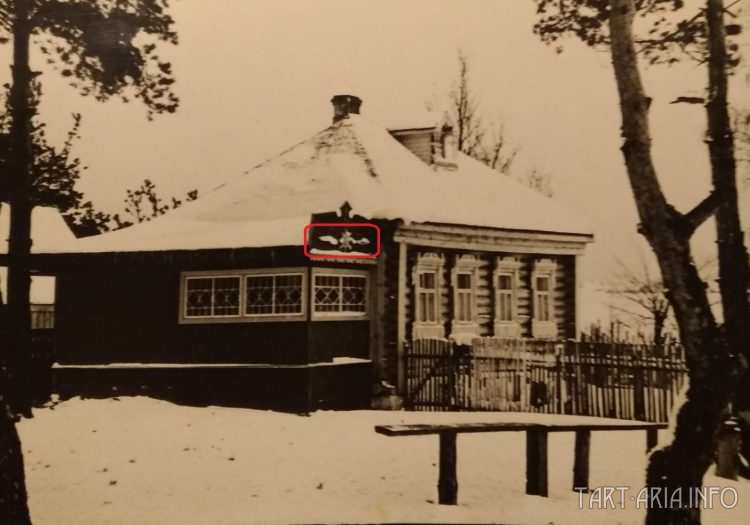
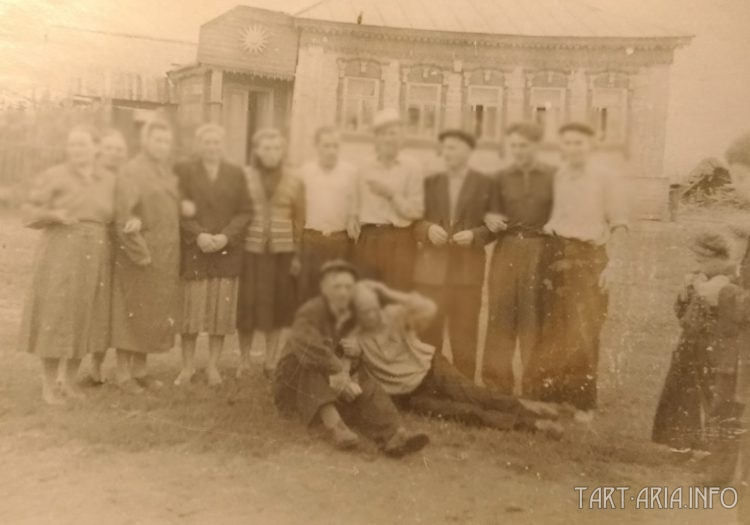
Well-informed people knew on the spot who lived in a house with those symbols. But we should ask here another question: how could a plot like this one get into a soviet movie? Could it all be done using the same guidebook? Or maybe the wars of «reds» and «whites» are one historical event? Maybe the time of «civil war» was nothing else but a common banditry performed by armed gangs (which is inevitable during insurrections of similar scale)? They could just replace the symbols with each other to confuse everyone, hoping that people who had been hiding in dugouts for half a century wouldn’t understand anything.
When I heard this story for the first time in my life I understood that something is terribly wrong with our national history.
When Kurshaks were not persecuted any longer, they made attempts to find their fellow tribesmen. It turned out that their story was not better. But even those who were found, barely remembered their historical roots (only elder people remembered at least something).

The same picture could be seen at the Baltic shore. Only settlements that were located in Vyborg partially managed to survive.
The new authorities that summoned everyone to get out of their shelters and start a new normal life turned out to be telling truth. Every family was given a land property of their choice. But nobody hurried to get out of shelter. When the oldest men and women (that still remembered the golden age) finally decided to do it, they were shocked by the scale of changes. Towns and cities changed their names (many of which were given a «спас-» prefix for some reason), all rivers changed their direction or completely disappeared, most former towns and cities were repopulated with strangers who came out of nowhere. Those strangers didn’t remember their history, they didn’t like to work and were addicted to alcohol (previously unknown to Kurshaks). The term «lost generation» was perfectly applicable to them.
Almost every town had a place that we call pub nowadays. Those pubs had support from the authorities, to make sure they could never run out of money (they were also secrued). Inside those pubs you could always buy alcohol and pay for it with almost anything – meat, hay, log or anything else that people had in their possession. At this point people found out what the money was for the first time. It was a terrible time in terms of economy, there were no forests, ground barely gave harvest, few people had livestock.
When people, who still remembered vereyas, looked at the new churches/temples they forbid their children to enter or even come close to them. Sophisticated technical devices and knowledge of the past were gone. People were building their houses from scratch, using improvised materials. Nobody could even get cast iron. Iron devices that managed to survive were made illegal by the government (they even called them «anti-christ» and «devil’s seed»).
Seeing all this made remaining Kurshak communities abstain from leaving their shelters. Moreover, they decided to build new communities and villages but far from the places where ordinary people lived. For some time, everything happened according to the plan, new villages were isolated, and had no contact with outsiders (though sometimes there were contacts, which mostly resulted in conflicts). Relationship with the authorities was the same as everywhere – they paid obligatory taxes and nothing more. Communities tried to completely avoid any contacts or business with the new government and society. They had their own self-sustainable society.
At the same time, Kurshaks began secretly building and using new vereyas in their hard to reach hideouts. Observing all the necessary precautions, they were delivering children and sick people there for healing and other procedures. Unfortunately, these vereyas often became targets of raiders, who were looking for the iron devices. In the above mentions pubs, these devices could be exchanged for anything, including gold and platinum (as a special service).
Many Kurshaks got so used to living in exile that they never quit their retreats. Some even refused to accept their relatives who had left at some point to live in ordinary villages.*
* - Throughout my career, I frequently had to deal with archeologists, who were investigating construction sites before the start of works. They shared some curious facts with me. For instance, most cultural objects of Russia had already been catalogued in the USSR time. Across the whole country, thousands of archeological sites are scattered. These sites are the places where people used to live at some point. But they don’t have much value. The true value is usually hidden at 3+ meters below the ground level, and all archeologists know this.
At the area of Kobilinka (mentioned earlier), near a place where a big vereya once stood, one Kurshak family decided to settle. To be more precise, they actually built a new village there, at the former location of Mershyora lake. The remnants of this lake can still be found there, in a form of small ponds. Every house of that village had a family with a lot of kids. Families with few kids were criticized and blamed. That family (which founded the village) managed even managed to built new vereyas, though it is unknown how they looked. Sometime in the late 19th century (now we can say for sure in terms of the modern timeline), my great-grandfather was born in that village. He had at least 5 brothers which managed to live up to a very old age. There was also another village nearby (built by another family) where my other great-grandfather and great-grandmother were born. Life and communities there were gradually thriving, though having a bit uncommon way of living.
My great-grandfather’s elder brothers turned out to be enterprising people. Luckily, they somehow received the technical knowledge of the past that has already been forgotten. Despite of all modern life tendencies, brothers decided to resurrect the production of iron devices. And they succeeded in doing it. For obvious reasons, they couldn’t and didn’t want to do it openly, so they covered it up with a workshop that allegedly produced chemical goods [Translator’s note: I guess you may call it a drysalter workshop]. They located this workshop on the first floor of the building depicted below (yes, this building still exists):
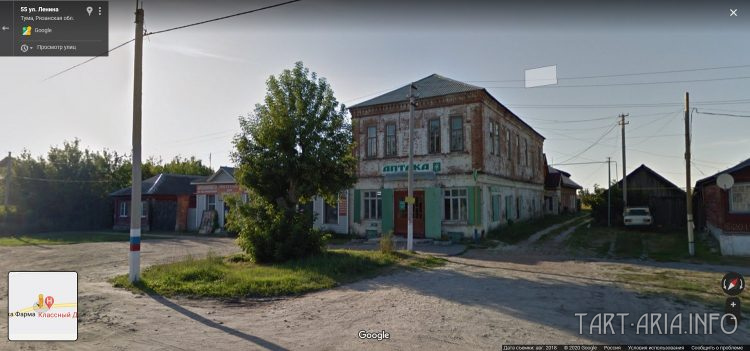
Workshop business allowed the brothers to supply the whole town with all necessary chemical goods. Soon they started to produce medical drugs as well. Vereyas became much more advanced too, but this information was kept in a very tight family circle. One of the brothers also started a photo-business, which was partially related to chemicals (and was quite new and exotic to the local area). The family’s business was thriving. The town was getting brand-new houses of great quality.
The local authorities even allowed Kurshaks to build their own temple there, trying to adapt them to mainstream life standards. The temple still stands there by the way.

This temple obviously had nothing similar with a vereya, except for the unusually thick domes. But most people had already forgotten vereyas anyway.
Unfortunately, this restful life didn’t last long. One winter day, a poor stray girl arrived in the town. At first everyone thought that she was just a common homeless person, since there were plenty of them in those times. She was dressed in dirty clothes and had injured face. But suddenly, she turned out to be well aware of various people that lived in the town (she knew exactly their names). She asked where they lived, and people helped her, because those people whom she named indeed lived there (though some of them had already been dead). They brought the first person from the list to her, it was a very old man.
The women started crying and shaking, and then told:
«Disaster! Disaster is coming! Pack your things and leave as soon as you can! They are killing our people in Vyborg, I am the only one who managed to survive and escape! They will come after you soon!»
She turned out to be a distant relative’s daughter that lived near Vyborg. She was taken to a house, warmed up, and asked everything about what happened in Vyborg. With great difficulty they managed to get a full picture of what happened. Apparently, there was yet another overturn of power, and the new authorities decided to wipe out everyone who was related to Kurshaks (they were called «old faith followers» there). The girl managed to escape, finding out previously where to go. She barely managed to reach the destination. When she was washed clean, it turned out she was only 14 years old*.
* - This woman eventually stayed in Spas-Klepiki and lived there for the whole of her life. Many years later, when her relatives in Vyborg were found and called her to return, she strongly refused. Apparently, the memories from her childhood were so terrible and scary that she couldn’t decide otherwise.
As many people still had in mind tales about the old war, they didn’t want to tempt fate. The brothers started preparing for evacuation. Most of the residents prepared to leave too. They headed for the former retreats of Kurshaks in far and unreachable places.
When the new authority arrived (as it was predicted), they didn’t start killing the left Kurshaks (surprisingly), but rather started with robbing the rich people, depriving them of everything they had. Some were killed, some were spared. Their next targets were churches and then ordinary people. It all lasted over several months. Local population in Spas-Klepiki tried to resist, but didn’t succeed.
The workshop that belonged to the brothers was just confiscated as all other enterprises in the area. They received new owners who found nothing else but empty workrooms.
My grandfather’s sister (the one who told me this story) was one of the Kurshaks who decided to stay. She told me that after all these events she managed to marry a rich local person who owned a local factory. But their marriage didn’t last long, as one day her husband was just arrested and taken in an unknown direction.
Another curious fact was that the representatives of the new authority had the very same symbols that were well-known to Kurshaks. But nobody was paying attention to it any longer.
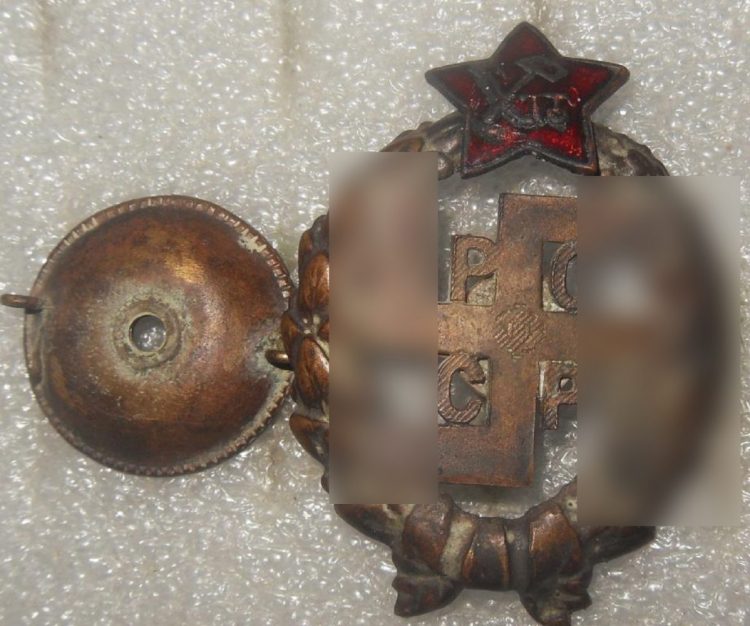
It is worth mentioning that not only Kurshaks decided to leave for distant retreats. Everyone who hated Bolsheviks was allowed to join Kurshaks. Kurshaks created a new settlement which was restricted for the new authorities. It is known that Kurshaks did everything they could to prevent Bolsheviks from getting there. They even used weapons when it was necessary. This fact is not publicly disclosed.
Eventually I found out that the brothers managed to find a very smart way to use the old technology. I found it out by accident, in the ill-fated 2020.
When the bolsheviks came to power, they certainly didn’t like the fact that there was an autonomous and self-ruled community hiding in the forests. So they decided to start gradually cutting down the forests which housed the retreats of the «partisans».
They did it by cleaning out narrow paths which later connected with each other into a network. This way they could accomplish two tasks at once: gather wood and find Kurshaks’ retreats. The workers usually created so-called «lumbermen villages» nearby.
According to the available data, big villages of lumbermen could be found at «Golovanova dacha», «Kursha-1» and «Kursha-2» villages/railway stations. Currently it is unclear whether the lumbermen knew or not the fact that they were sent there to not only cut the forests but also to find Kurshaks’ retreats, which eventually happened.
But Kurshaks managed to do what nobody expected from them at that time. The brothers learned from the strategical mistakes of their ancestors and out of the iron devices they crafted a powerful weapon, exactly the same that was used in the old times. They used it according to its intended purpose*.
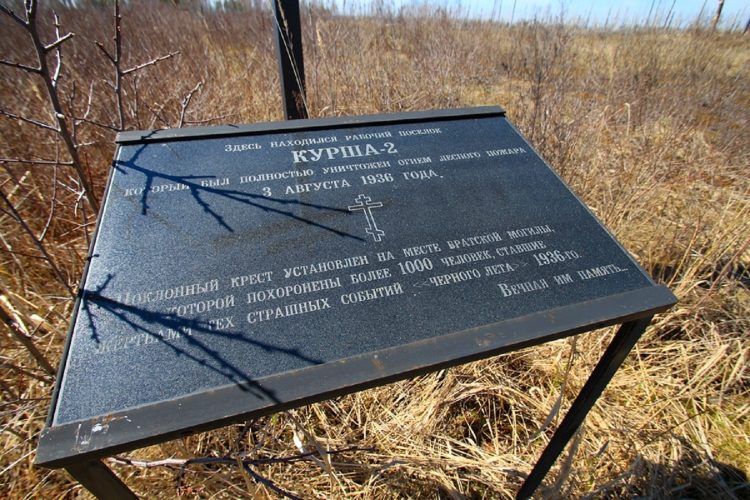
*- That weapon was not just a special chemical substance from the workshop, but rather a set of portable modules that were assembled into metal frameworks that looked like tents (the so-called «тура») as well as wire ropes and cannons. Anyway, it is just an approximate idea of how it could look, so I’m not 100% sure about its design. By the way, I used the word «тура» (tower in English) for a purpose. Most people know this word from chess, but nowadays this figure is called «ладья» (rook in English). This new term was put in the place of the old one to make people forget about original meaning and look of it. If you look at the Wikipedia page of it you can see that some languages saved another meaning of this word, which is – cannon. It’s not hard to see the connections.
I also have to say that I am in no way exulting at what happened with the people who were injured and killed because of these weapons. I feel sorry for all those people who died as well as their relatives (both accidental and those who deliberately went to hunt down Kurshaks).
The hidden story of this event is gathered piece by piece from the interviews with various eyewitnesses, recorded over the years. Here is a description of those events by an eyewitness G.E. Klemenov (a war veteran by the way, who had surely seen a lot):
«We didn’t see such fire even at the war. It moved across the forest with a terrible roar. Its speed was so high that almost nobody could escape it. The fire reached everything and everyone. Cows, horses, small animals, birds – all died. Even fish got boiled in the water. It looked as if the the forest was not just burning but rather exploding. Vortices of fire and black smoke rose to the skies. I though that the whole world was burning.»
A story by another witness - Uliana Pavlovna Vodorezova, who saw the fire when she was just 15:
«I saw huge balls of fire that were flying out of somewhere in the forest. I remember how one of those balls hit a nearby building. So many people were burned..... Some tried to hide in a well, but in vain. Everything was on fire, thousands of people died that day.....thousands....».
I will tell you even more – during that terrible day, even houses in nearby villages flamed up. It looked extremely odd, because objects flamed up out of nothing. Nobody could understand what was really happening. The true story behind this event was classified (and still is). Casualties were buried shortly after the incident. Official reason of fire – dry weather and combination of unfortunate circumstances. The government even helped people financially to rebuild their houses to smoothen the situation.
Right after the incident, authorities reflexively closed all churches in the area, which caused an unprecedented protest of the locals. At some places they even had to use force to calm down the protestors. Moreover, the government relocated several fully armed military units to the area of Kursha-2. When Kurshaks got this information they understood that it was pointless to continue their resistance and decided to hide their equipment and disperse. This way ended the first (and probably the last) fight between Kurshaks and the reds, with a lopsided score.
Some time later, in 1936 or even a bit later, three common soviet families arrived in Murom [Translator’s note: in case you don’t get who they are – they are former Kurshaks]. They received 3 flats from the government in a two-storey house. They had IDs of ordinary peasant-farmers with a perfectly clean history (it is unknown how they got those IDs). Later on, they managed to get jobs. One of them got a job of a stoker at a local school, which was located at an old church.
My grandfather’s sister was living at a village at that time, and managed to get married for the second time. But she had a problem – her children kept getting ill with diphtheria. All her children kept dying, one by one. She told her relatives in Murom about the problem, and they found a solution. The person who was working as a stoker, knew about the nature of the iron devices, and used his job to check the building he was working in for the above mentioned devices. He knew a secret way to find the stashes with iron devices and one day he managed to find them (I heard that he had to do dig under the walls in order to find them).
Now he had a similarly hard task to transfer those devices to Spas-Klepiki from Murom. The road involved changes at three stations, thus being too dangerous. So it was decided to use a sledge, with the package hidden inside, and the whole thing simulating transportation of a sick person. The package eventually got delivered, but unfortunately it didn’t help to cure the children. They even managed to get additional devices from former hideouts of Kurshaks but they didn’t help too. Upon this initiative, the devices were kept in a safe place inside the house. They were used in all secret rituals/procedures using a special metal framework*.
* - During the winter of 1973-74 I went through a certain initiation ritual, which would have cost my relatives their career (if someone had found out about it). Several years later, our iron devices were stolen by thieves, but we couldn’t tell anybody about it, for obvious reasons.
Years passed, then happened WW2. Fortunately, every person from our family that went to this war returned safe and sound, with a bunch of decorations and medals. All three families gave birth to children. One of those children was my mother (as well as my uncle, whom I will tell you about soon). They were ordinary soviet families that lived ordinary life (even though they had secrets, nobody knew about them).
My uncle deserves his own part in this story. He was a very talanted person since his childhood. During his school years, he started attending a radio geek club. It was a popular thing in Murom at that time, as the city was producing various radio-tech, bot for civilian and military use. It was a long-time hobby of my uncle.
At some point, my uncle managed to find out the secret of the iron devices (which is not surprising, given that it’s all interconnected in terms of physics). Though I do not exclude possibility of his relatives’ contribution. One day he even managed to get the inner filling/substance of an iron device. I’m not sure where he could find one, maybe he found it in an abandoned building or maybe at a military factory. But he knew that it could be detected, so he was hiding it in a shed far from the house.
There was one interesting case, when my uncle (with one of his friends) decided to summon a «ghost», using a «holy fire» (a special lantern like the one I described earlier) powered by an iron device and a piece of an old mirror (which they found at some old house). But they used a wrong component (linseed oil instead of frankincense oil), and the lamp didn’t light up. However, the lantern started sparkling when the mirror was put close to it. Experiment was stopped shortly after this, but both of them had problems with eyes for a long time since then. But that’s not the end of the story. At a certain distance from the place of the experiment a military unit (code named – «object 310») was located. And it turned out that this military unit experienced a loss of radio communication around the time they guys conducted their experiment. Very soon the shed with the stash was located by a special service, with iron devices being confiscated. Luckily, my uncle managed to get away with that situation by playing the fool, and claiming that they had found those devices by accident.
Since then, my uncle was more precautious. Over the years, he managed to make a decent career, which assumed a pretty high military rank. He was working at a high-security facility, which was producing high-tech military radars. His role was to accompany the exported goods during their shipment to foreign countries. That’s all I know about his job. I didn’t see him often, but since 1980, we used to go out of town together every summer. I remember that in 1982, my uncle brought with him a «ФЭД» camera with a magnifier, a lamp and a thing that is used to develop films. When I asked him why he brought all this, he answered that it was high time I took up something new and useful. He showed me everything I needed to know as a beginner, and added this:
«Try to take photos at some old buildings, but necessarily with the electric lights on (even if it is daytime). If you get something like this (he showed me a photo), tell me where you made that photo.»
He gave me a photo that was similar to this one:
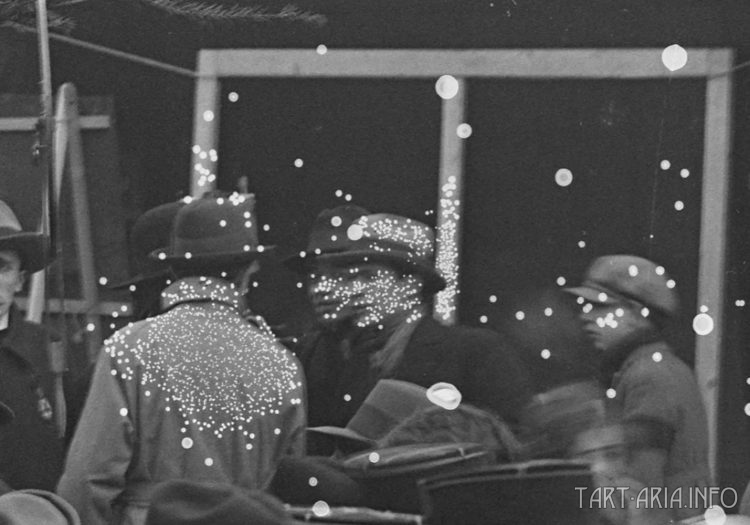
To the question – «why?», he answered very vaguely – «Some old buildings still have old-fashioned antique chandeliers, and I want to find an original one. Another reason is that only those old chandeliers cause the strange effect from the photo due to light dispersion.» His explanation of the effect was obviously nonsense, it was just a legend.
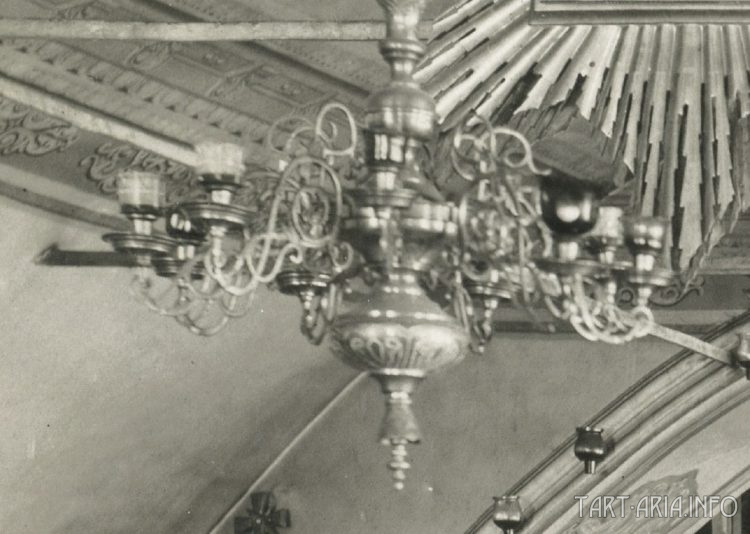
I tried making photos according to his instruction in numerous places, but had no luck in getting the desired effect. However, one single time, it happened, but not because of a chandelier. One old house had a furnace made of cast iron, that looked like this one:

That furnace was huge and was used by three separate flats in turns. I still wonder how this furnace managed to survive the war time, when authorities were confiscating all metal they could for the war needs. By the time I made that photo, I had already forgotten about my uncle’s request. So when I saw those odd spots in the photo, I knew I had to show it to him. Shortly after this, the building that housed the furnace was closed for a capital repair with all its inhabitants relocated to another house (they never returned to that house again). The furnace was probably gone after this incident. It was very odd, especially given that fact that people usually waited for decades for their houses to be chosen for capital repair.
There was another curious case that I would remember for the rest of my life. During the «perestroika» time I heard that radio geeks earned upmost respect by learning how to transmit a signal into the all-union cable radio network through sockets that were installed at all homes. I was already a radio geek myself so I genuinely wanted to learn that skill, but didn’t know how to approach it. I disassembled one home loud-speaker and found a transformer inside. I tried to inspect its properties but as there was no internet at that time, and it was a whole journey to go to a library, I decided to visit my uncle for advice.
We had a dialog that looked something like this:
- Tell me please, what type of transformer do I need in order to transmit a signal into the cable network using one of the amplifier’s outlets?
- You tell me, you are a specialist here. Take a guidebook, do necessary calculations, chose the right wire and spool it (said my uncle, with a voice of an engineering department’s chief)
- It will take too much time. Maybe you have a spare transformer somewhere?
- What do you think it is here, a warehouse? (Then, having taken a short pause and thought about something, he continued.) Actually....I have a spare transformer. Let me go to the garage and bring it.
He left for the garage and came back in 15 minutes, bringing an odd oblong device encased in a green military metal container, that looked like a brick with a valve on its back.
Then he explained how to connect this device to the cable radio network. What’s interesting here is that he told me to connect the device in a very unordinary way (using the headphones socket). He also instructed me to conduct the experiment no longer than 10 minutes. Upon 10 minutes’ termination I had to immediately disconnect everything and bring the device back to him. I was also forbidden from twisting off the valve, as there was something liquid inside.
I was surprised with the instructions he gave me, but eventually, everything worked. One summer day, during a break for lunch, when all-union cable radio network was turned off for an hour (as usual), some soviet citizens were a bit shocked when they heard a popular song of that time playing on the government radio. Even more surprised were the local authorities, located nearby. But fortunately for me, nobody found out that I did it.
Transmission of the signal occurred without any problems, despite that fact that it was considered impossible to transmit a signal into the network over the headphones socket. Another curious thing I noticed was about the wire which was connected to the capsule with liquid. It became electrified in an unusual way.
When I told everything to my uncle, he told me some words of praise and said that soviet military industry is capable of doing impossible and can withstand any war*.
* - Soon after this occasion my uncle died. I remember that he left for Moscow, to attend one of his ordinary meetings related to his job. On his way back, he only managed to get on a train, and then suddenly got a heart attack. Died almost immediately. He was less than 50 years old. Soon, the country fell too, as well as its military industry. Over the years, I’ve been thinking that he definitely had been doing something related to a special «chemistry», based on the knowledge of our ancestors. I’m not sure whether he did it for the government or for himself, but does it really matter now? That country is gone, uncle is gone too.
My uncle’s mother was a second sister of my grandfather. My uncle’s father was a native of Meshyora. He got married there, even before moving to Murom. Despite the mysterious past of his family, my uncle’s father went to the war and survived. He was a political officer/instructor («политрук») and knew everything about it. However, he retired from the military service in 1953, officially due to health problems, but in reality, due to the fact that he couldn’t accept the new state of matters in the government and the country. He was getting by on his military pension, spending his time over watching TV or doing cross-word puzzles. Sometimes he was getting drunk and talked to TV. But during those moments, he was purely honest, and spoke some very odd things. According to him, the WW2 was a greatest scam of the 20th century, and that it was far from being a real world war. He kept saying that there were no real socialism, and that Stalin was the only reason they were all alive.*
* - Over the years I have realized that his words were 100% true. Any country (no matter what political order it has) can be divided into two groups: 1 – ordinary citizens for whom exist laws, official history and other stuff; 2 – small group of people who control them. This group of people may even control a bunch of different countries (which in their turn consider themselves to be independent). There are no rules or laws that can restrain them.
The only true war happened in the 19th century, when the eurasian continent was wiped out and when the change of power occurred. All subsequent wars were just forceful attempts to reconsider the results of the big war.
Ok, let’s continue. So, where could the Kurshaks’ objects (which they so fiercely protected) be located? Let’s make an assumption that soviet authorities knew where exactly Kurshaks’ retreats were located and made the forest paths in the right directions. You can actually find plenty of old RKKA maps of 1930s on the internet, where numerous narrow paths and dead ends can be seen.
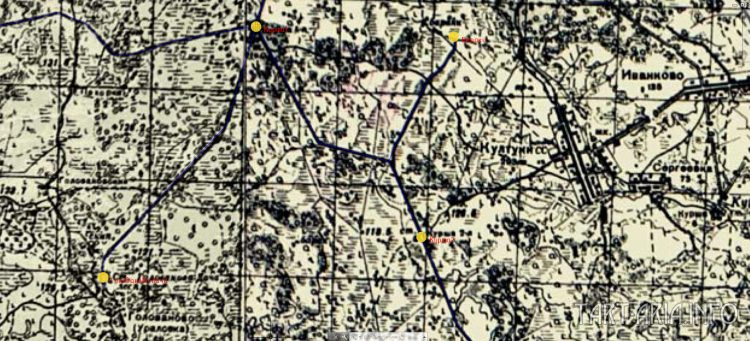
The map was big and confusing, so I transferred the main locations to the modern satellite map and connected them with a line.
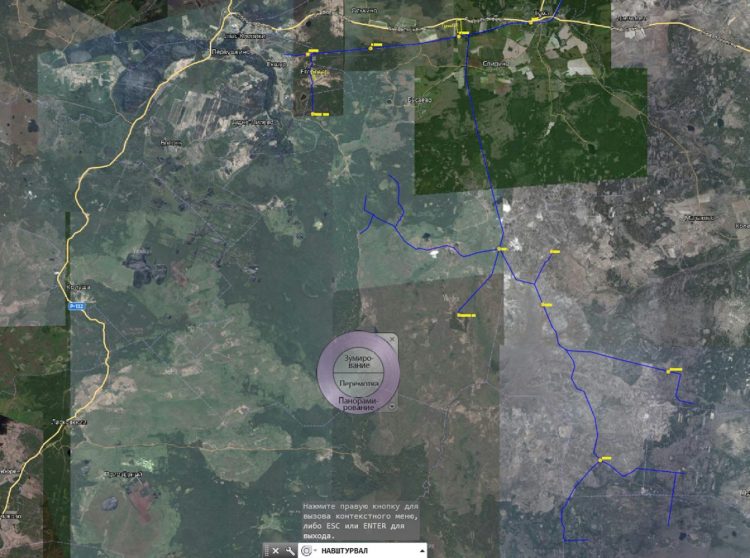
Even after being disassembled, many forest paths (that ramify from highlighted locations) are still visible on the map. If you look at this area on the satellite maps yourself, you will see those paths. They were surely searching for something. But there are no traces of building or even remains of them. They could be destroyed or just devoured by forest and swamps. What are we looking for then? I think we should start looking at known places first, like Spas-Klepiki.
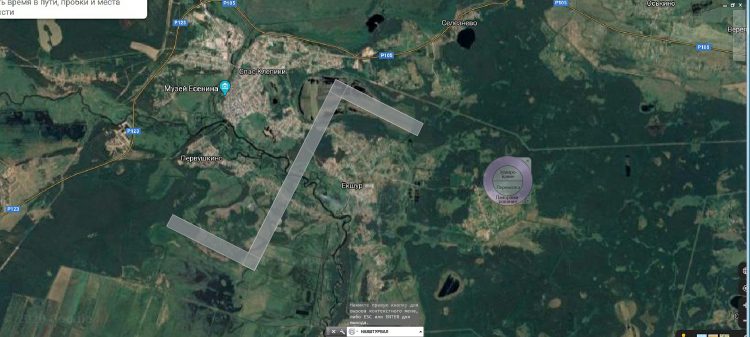
I didn’t even have to look for a long time. The crossing of main roads in Tuma form the same shape. To see it, you should open the full-scale map. But what does it mean? If all these towns are old, there certainly should be some geographical traits that would help us restore the former geometry. The direction of oldest streets can provide us with some hints.
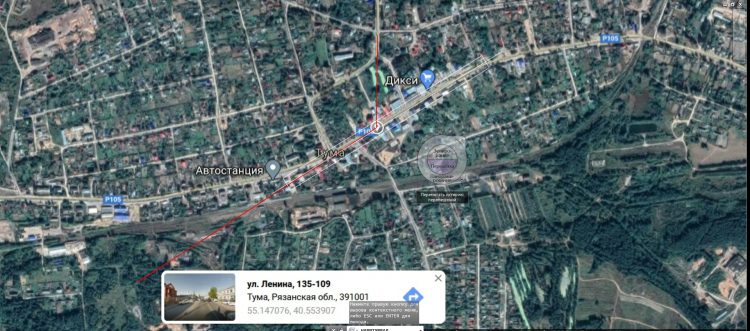
Let’s take the main crossing in Tuma, formed by Lenin and Engels streets. The Lenin streets are marked with the red line. Two axes suspiciously form a corner of 120 degrees. It is a coincidence? Let’s transfer this axis to the satellite map (with the given direction). Then combine it with the axis from the Spas-Klepiki. Now let’s analyze the crossing of these two axes. Divide the distance from the crossing point of axes to the crossing of streets in Tuma by two (by drawing two circles and a line at the point where they intersect). The line that we get (highlighted with yellow color) is then drawn symmetrically in another direction.
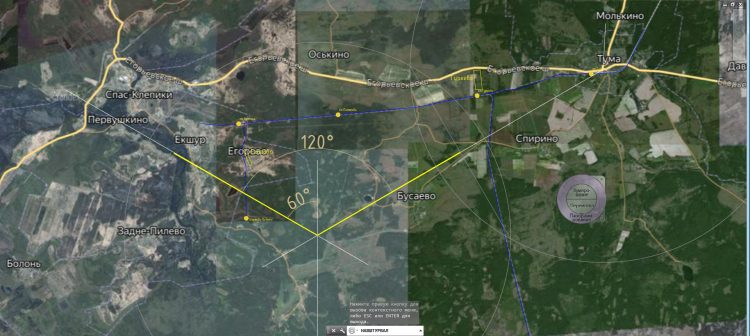
We can notice several curious things. Firstly, our intersecting axes form a 120 degree corner and both have a 60 degree corner with a vertical axe of the map (north-south axe). Secondly, the end of the thick line (Spas-Klepiki axis) curiously overlaps with the curve of «Пра» river. Taking into account the inaccuracy of satellite maps, we can assume that it’s absolutely not a coincidence.
Those of you how are good at math have probably guessed that we are dealing here with Sumerian concepts of triangular-shaped world organization. According to their teaching, any circle can be imagined as a set of 6 equilateral triangles.*
* - During my last visit to Spas-Klepiki (in the time of USSR), I stumbled upon an interesting old book. It looked very strange and contained various geometrical figures. The language it was written in was absolutely unreadable, without any commentaries that could be read. There were also formulas, but not with x and y, but rather with old-slavic symbols. I was told that it was an old maths book, that was used to teach children at school. At that time I didn’t understand the value of this book, but now I know how valuable it was. Only now I understand that the math from that book was at a completely different level from what we use nowadays. The book had equations to calculate properties of waves, but if modern math uses huge formulas for this, the book’s formulas were much simpler (they just used different symbols to do this). So it is arguable, whether that Sumerian math was Sumerian after all.
Ok, let’s try to use the Sumerian math here and find a center of our big circle, built of equilateral triangles. For this we’ll use axes that we previously drew above Tuma and Spas-Klepiki. Using the rule of circular symmetry, we’ll draw these triangles in the southern direction.
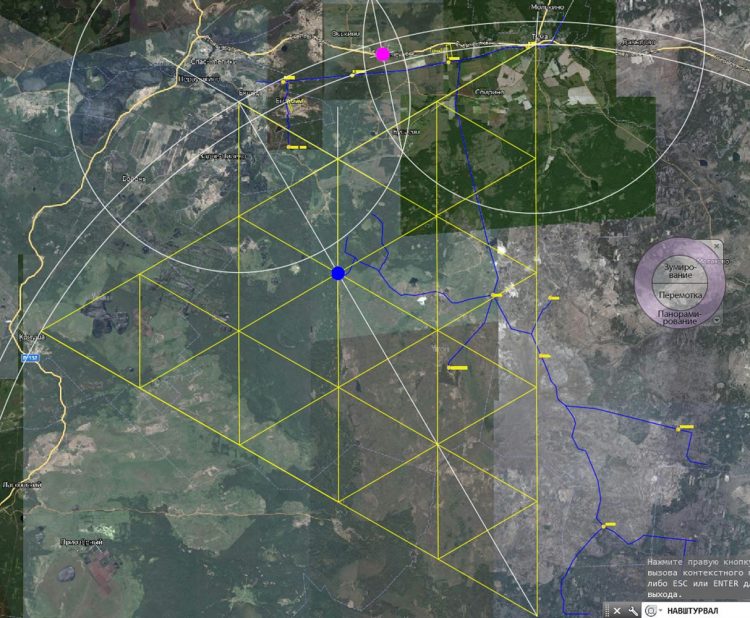
Again, new curious things show up. If you draw the circles correctly, you’ll get a triangle that points to a village named «Kriusha» (west side of the map). This place also corresponds to one of the dead-ends in the forest (blue dot on the map). Additionally, drawing small circles (white on the map) around Tuma and Spas-Klepiki (and also drawing a line from the points where they intersect) reveals an area that was a perfect location for the vereya in Kobilinka that I talked earlier in the text (pink dot on the map). And what do we have in the center of this big circle (the southernmost dot on the map)?
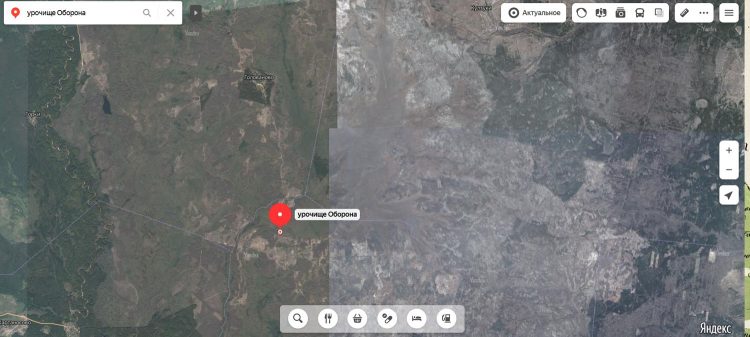
(An interesting fact worth mentioning: This place was named this way because it were the reds who had to defend themselves, not the Kurshaks. According to folk stories, they were terribly scared of Kurshaks and their weapons).
I think it is not a perfectly calculated location, but anyway, we are surely on the right track. Kurshaks deployed their weapons there and waited for intruders. But given the fact that the fire we talked earlier managed to reach Kursha-2 station, we can assume that invaders came from a different side, but which? Let’s try to find out.
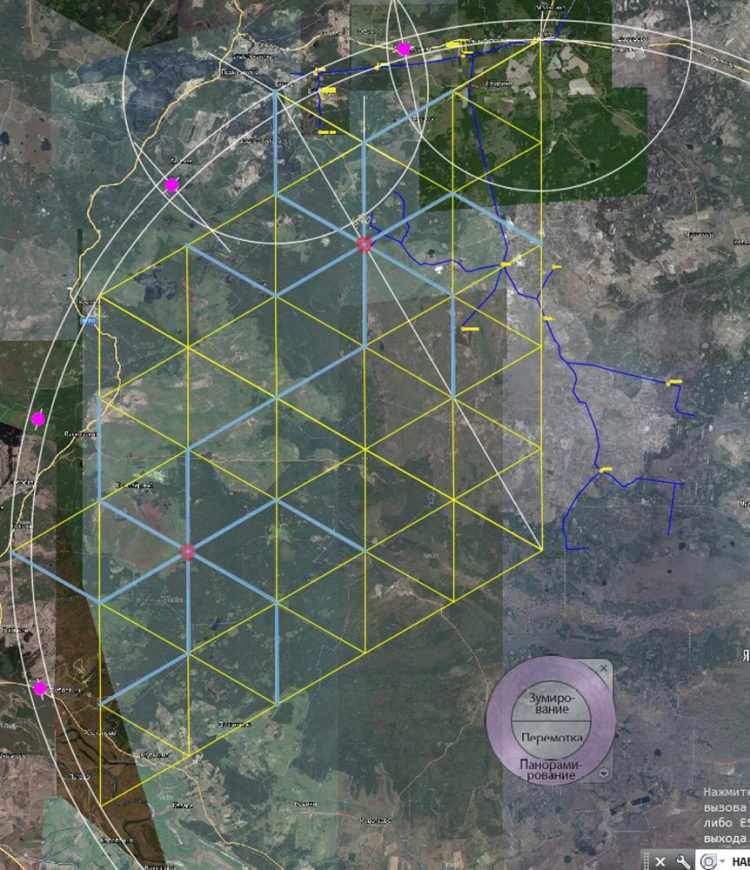
Thick light blue lines are channels (didn’t hightlight them too strongly to avoid attracting attention).
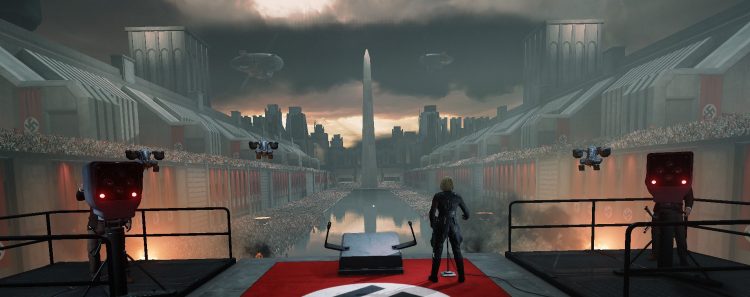
It was a huge city, comparable with Moscow in size. This might be the very true Ryazan I was talking about. I can’t even imagine the number of population that could live there in the golden age. Who built this city? Could it be Kurshaks and their Tartarian ancestors? I have no doubt that it were they, given the symbols that we’ve uncovered. But was it just a symbol after all? A very interesting question.
But where did the battle between reds and Kurshaks happen in 1930s? Let’s look again at the RKKA map, where all settlements and other objects are displayed (even those that disappeared long time ago).
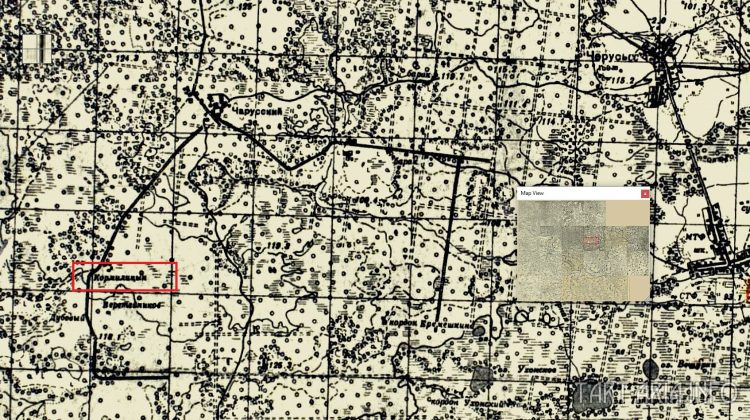
To make it easier for you, I can tell you that it’s a location named «Кордон Кормилицын», right near a dead-end.
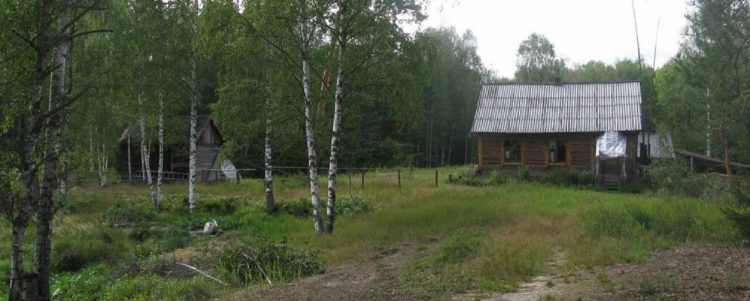
It was named «Кормилица» [Translator’s note: Russian word «кормилица» comes from the word «кормить», which means «to feed» in English] because there was a vereya that feeded local people with well-being. At some point of time it was disassembled like all other vereyas, with its components* being hidden or taken away. I wish a had a geo-scanner to search this place. After all, it’s only 200 km from Moscow...
* - Who wants to become a millionaire? Shortly before being executed, Saddam Hussein declared that he would award a lot of money to a person who would bring him a formula of the very substance that was used in vereyas and the iron devices that I described throughout the text. As far as I am concerned, the manufacturing process of this substance is not harder than producing bootleg alcohol. But as you know, Saddam was killed. Everyone was sure that he was trying to create a nuclear WMD, but who knows, what he really intended to do there.
I’m not trying to call for any kind of illegal weapon or chemical substance production here. I’m just saying that a single piece of paper with a formula of the substance written on it would cost peta-times more that the cost of separate components (if sold on the darknet for example). Any chemist would identify the formula of this substance if he or she was given a real sample.
How did «Кордон Кормилицын» look when it was still intact?
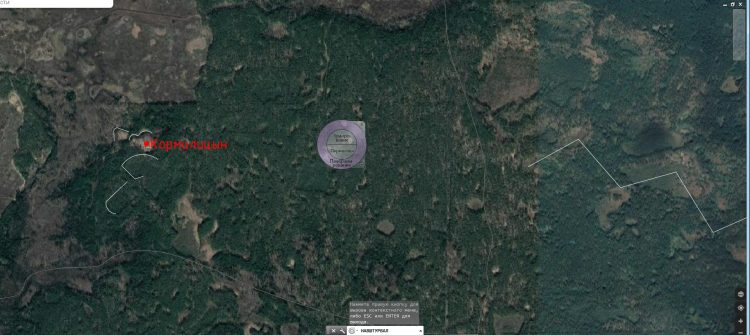
It’s hard to say without geodesic works in the field, but I think it that it might look like this:
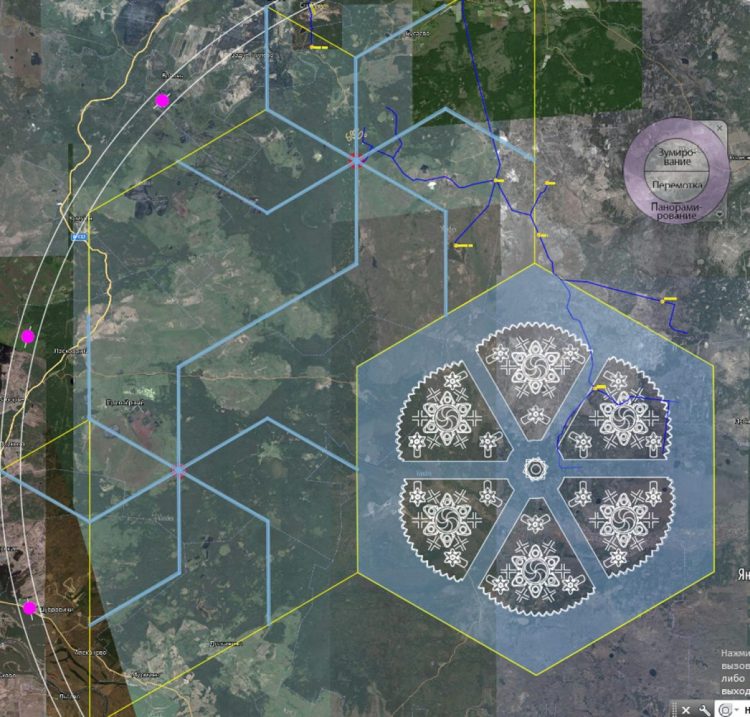
Or this:
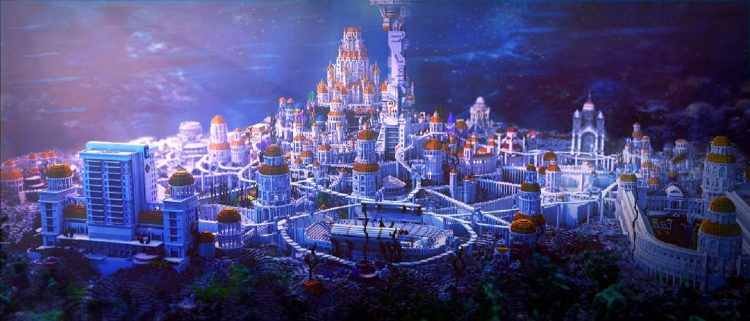
If you were looking for a Hyperborea-like city, here is a great place to start your investigation. It even had a famous water swirl, but it was underground. Many underground tunnels that are found nowadays were used as sewers to supply cities with water (not as subway tunnels as many suggest). When the system of underground water tunnels was destroyed, it broke the water balance of the area, creating the infamous swamps of Ryazan.
Now I think it all makes sense.
It was a cold April of 2017 when I had a curious dream. During this dream, I spoke to my ancestors, who told me this:
«Hurry up, the time is running out. You should resurrect our shrines. In the name of our ancestors. Let others be sure that nothing is happening. We are with you!»
Dream got interrupted. Being confused, I tried to understand what happened.
It was around six months left before my trip to Switzerland.
Even though it is based on true events, I want this text to be considered a science-fiction. I guess it could become a great basis for a Hollywood movie plot. At the very least, I hope that it stays undeleted on the internet, to let more people read it. PS: official historians, scientists and conspiracy theories debunkers – I know what you want to tell me. I don’t care about you. Neither do the readers.






